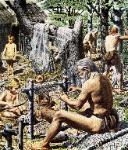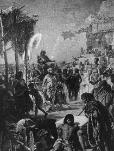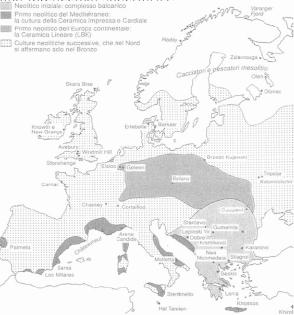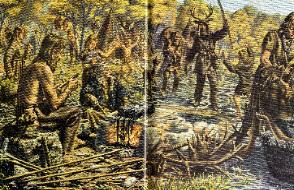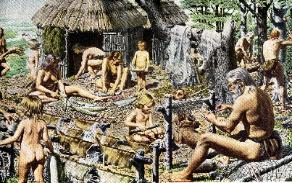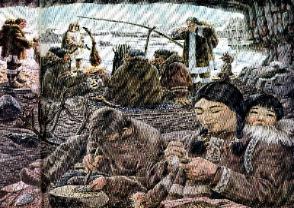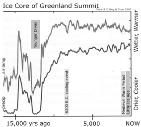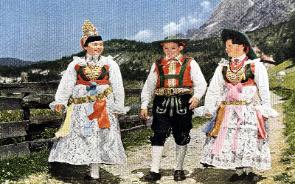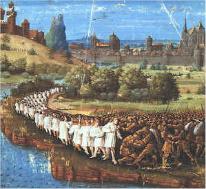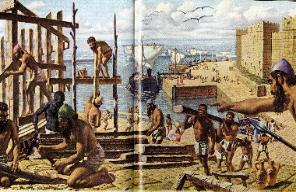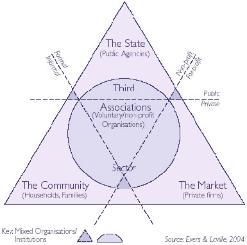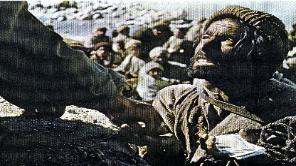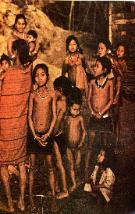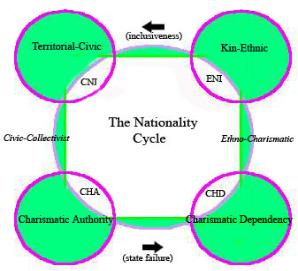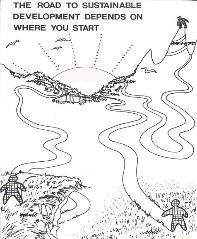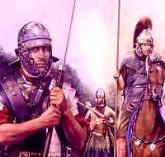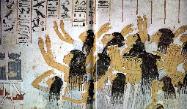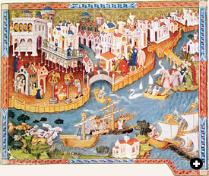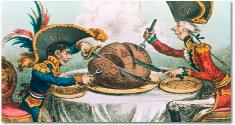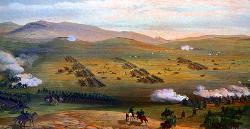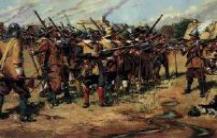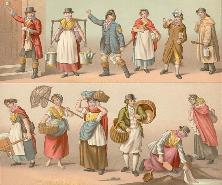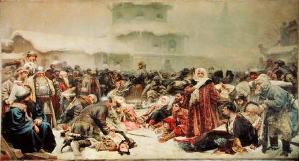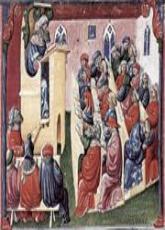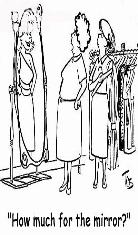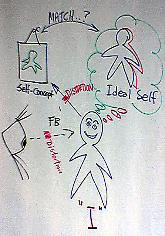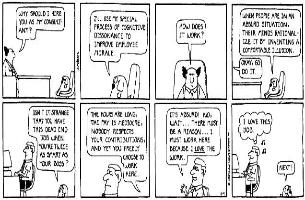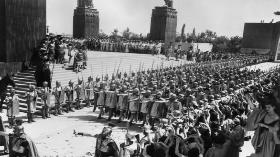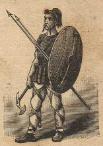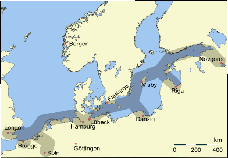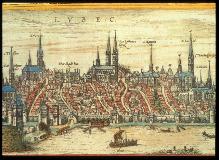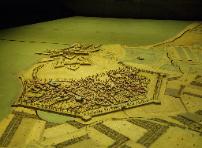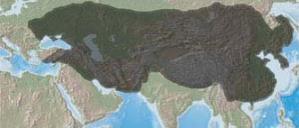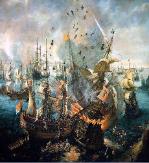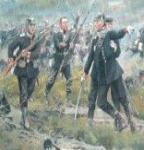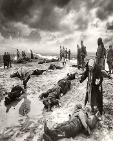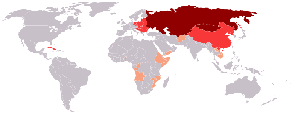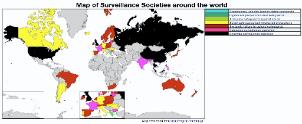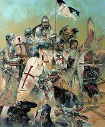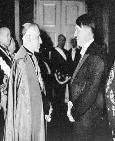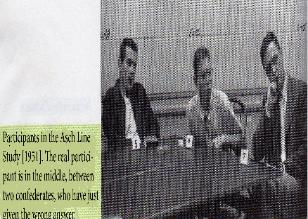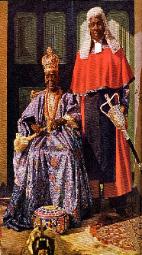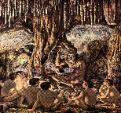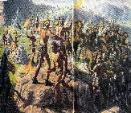| ' CHAPTER 3 ' HOW HAVE PEOPLE FORMED NATIONALITIES? "It is now generally realized that traditions elaborated in the West must be re-examined as part of a larger whole. But what are the relations of the parts to the whole, if there really is a whole? Can we bring the myriad cultural traditions into a single pattern of evolution? Can we find common elements and speak with conviction of a common cultural tradition for all humanity? Answering such questions will place the national, regional, religious, and ideological traditions of the West and East in new perspectives. Finding these perspectives seems to me to be the main intellectual challenge faced by the historical profession in our rapidly changing world" - Fredric C. Lane, Venice and History, 1966 “A man is always a teller of stories, he lives surrounded by his own stories and those of other people, he sees everything that happens to him in terms of these stories and he tries to live his life as if he were recounting it” - Jean-Paul Sarte, 1964 (Bruner, 699) As we have seen in the preceding chapter, the roots of our forming groups goes back prior to homo sapiens or even the homo line of hominids. The populations of such groups, however, did not grow into the thousands- into ‘imagined communities’- until demographic pressures for our species first began to manifest in the later Upper Paleolithic (20k-10k BCE) and ensuing Mesolithic/Neolithic eras. These terms may require some introduction. From circa 10,000 BCE to c.5,000-3,000 BCE, most areas of Eurasia, the Middle East, and North Africa are characterized as either Mesolithic or Neolithic, based upon whether the local economy was either predominantly agriculture-dependent (Neolithic), as was much of Anatolia, the Near East, South Asia, East Asia, and Southeastern Europe for most or much of the era; or predominantly mixed (Mesolithic), with widespread permanent settlement and some degree of agriculture, but still significant hunting, fishing, and collecting- as in most of northern and western Europe, northern Eurasia, and Mesoamerica- for most of the (10,000-5/3,000 BCE) era. Since this time, a key factor in human success has been the ability, not so much to hunt, as to form ever larger and more coordinated coalitions in the pursuit of common interests. These interests, more often than not (and increasingly) came into conflict with the interests of neighboring groups, thus motivating (along with population increase) the creation of still larger groups. This cycle of group competition increased the scale of sovereign human groups, from the intimate bands of the Paleolithic, to the tribal coalitions (and later chiefdom confederations) more associated with the Mesolithic/Neolithic. It seems to us that such ‘imaginary communities’ (coalitions or confederations of tribes numbering in the thousands) constitute proto-nations- in that group members did not know or had not met all (or perhaps even most) fellow members, but were nonetheless expected to be loyal to and acknowledge the sovereignty of such groups and their leadership. The ostensible paradox of giving loyalty to work for and defend persons whom one does not know could only be justified and implemented on the grounds of necessity- if complex hunter-gatherers did not consent to organizing themselves into proto-national coalitions, then some other (even more foreign) groups would do it for them. The cycle of ever-larger sovereign and rivalrous groups (concurrent with the Age of Intraspecific Conflict; Fig. 2:1) originated in prehistory, and is still with us as a governing ‘national’ paradigm today. We must reiterate that although many scholars have, like Walker Connor, defined nation as “a self-differentiating ethnic group” (1994, 42), we do not see the need for any ethnic qualification in this definition. Of course it is likely that the earliest proto-nations were predominantly kinship-based, simply due to geographic proximity. However, this is not (as of today’s knowledge) a matter of fact but of speculation; and even if many or most proto-national groups emphasized the matter of pedigree (as they would with their dogs or livestock), it is by no means certain that all complex hunter-gatherer societies consistently behaved in such a manner. Quite the contrary, if competing nations in the modern era can see it fit to disregard ethno-racial constructs in their efforts to out- compete rivals, then could not the same be said for prehistoric tribesmen (overcoming kinship qualifications) to seek comparative advantage, or perhaps merely survival, against rival proto-nations? In the words of English poet Walter Savage Landor, “we talk on principle but we act on interest” (Forster, 1876, 96). In reference to Frederic Lane’s questions in the introductory quote, it appears that the “single pattern of evolution” that is “a common cultural tradition for all humanity” is the human phenomenon of nationality. We are all, on all continents and in all cultures, now members of nations- imaginary communities that have increased societal trust and economic efficiency. But all of these nations- some 190-something at latest count- did not take form and develop in the same way. The “myriad cultural traditions” of the world do fit into “a single pattern of evolution”, but, in order for that cultural evolution to have taken place, there must have been different competing sub-types within the larger evolutionary pattern (of nationalities). Specifying the relations of a great many “parts to the whole” is not within the scope of this book. If we can examine enough pieces, however, to classify these great many parts into a manageable number of well defined categories, then we will gain not only greater clarity and understanding of the broader patterns of the nationality phenomenon, but also the ability to theorize and perhaps even predict where specific nationalities and national identities might be heading. Given proper theoretical categories, we may find in time that aggregate national identities are not mysterious at all, but can be as habit-prone and predictable as any other large animal in wild. Let the tracking begin. Prehistoric Proto-nations “A people’s adaptation to its environment was its civilization” - John Iliffe, A Modern History of Tanganyika, 1979 (9-10). “Cultural information may be especially dynamic because it is a fundamental aspect of human social coalitions… Human ‘culture’ is not just a pool or source of information; it is an arena and theater of social manipulation and competition via cooperation. Culture is contested because it is a contest” - Mark Flinn, 2004, “Culture and Developmental Plasticity: Evolution of the Social Brain” The sentiment of nationality and imagined communities originally arose in our species sometime during the later Upper Pleistocene, as some areas began to experience higher population growth than could be comfortably accommodated, given the trophic limits of traditional hunter-gather bands. As complex hunter-gatherer societies and permanent settlements began to develop, largely in response to population pressures, traditional exogamy was supplanted by endogamic practices, and these new, increasingly complex societies no longer had reliable demand for foreign persons from competing tribes. As ‘imaginary communities’ of hundreds and thousands of tribesmen began to develop, artistic cultures (enabled by 'spindle cells'; see chapter 2) helped to first propagate tribal memes and symbols of group identity. Although there is no evidence as of yet for any of these early tribal rivalries organizing violence against one another prior to circa 13,000 BCE (by which time population-trophic pressures were intense in a great number of regions), it may be presumed that many, if not most, of these increasingly complex tribal cultures began to consider their proto-nations as significantly distinct from those of their neighbors. These distinctions could be based on any number of demographic, cultural, or even artistic characteristics- certainly not just perceptions of kinship and ethnicity. It may be hypothesized that this expanding variety of proto-national cultures from the Mesolithic and early Neolithic (c.9000-4000 BCE) can be simplified into three basic types, corresponding primarily to the broad geo-economic features of the land which they occupied and managed. Proto-national or primordial (prehistoric) human cultures cannot be said to have been entirely 1) migratory/pastoral and charismatic leader-based; nor were they all settled farmers- with either 2) a more narrow kinship basis of identity, or with 3) a relatively open and more territorial/civic-based identity. As alluded to in the previous chapter, the several thousand year transition period between primarily collecting food and primarily cultivating food was an era of the most profound cultural diversity and change. Although an increasing number of former hunter-gatherer peoples became permanently settled farmers, dependent on the crop-yields of cleared lands; many others, occupying land too dry or otherwise difficult for permanent farming, depended primarily on herding domesticated animals for their livelihood (see chapter 2, pp. 19-45; Fig.2.2). Still others were able to maintain permanent settlement along coasts, large lakes, and other littoral environments, where economies tended to be more mixed and less dependent upon a single class of resource. Perhaps complex hunter-gatherer communities survived for substantially longer periods in such littoral environments than they did in areas dependent upon agriculture or herding. Prehistoric littoral communities have often been overlooked by academics- often literally. Marine anthropologist David Sanger reminds us that details on coastal data are often “scant prior to 3000 BP” due to sea-level rise and submerged coastlines. From approximately 18,000-6,000 BCE, sea levels rose more by an average of more than 120 meters, and have only lowered slightly from then. “The transgressive nature of the shoreline means that reconstruction of the aboriginal approach to space is an artifact of both human choice and erosion” (Sanger, 1996, 512). Archaeologist Knut Fladmark recalls his proposals of “a kelp highway” facilitating migrations from Asia to America around the north of the Pacific rim being “met with absolute anger” by older academics several decades ago. Today, however, such models of ‘the first Americans’ being “a primarily fishing-centered society”, in contrast to traditional views of hunter-gatherers, are rapidly gaining ground (Pringle, 2007, 11). For instance, it is now acknowledged that the oldest human bones found thus far in N. America were from Santa Rosa Island, 42 km off the coast of Santa Barbara, California (Dalton, 2007, 257). Perhaps the millennium and a half of colder temperatures in the northern hemisphere known as the Younger Dryas (c.11,000-c.9500 BCE) contributed to littoral heritages. Palaeoceanographer James Kennett and others have argued that the cooling era was set off by a large comet impact or explosion over the arctic of the Western Hemisphere. This in turn caused enough fires, heat, and glacial runoff to significantly alter the warmer Atlantic Ocean current of the time- in addition to scorching much of the North American continent with wildfires- to which the extinction of all megafauna1, the disappearance of the ‘Clovis’ traditional hunter-gatherer culture, the prevalence of glass-like crystals and rare elements, and very frequent layers of compressed charcoal bear testament (Dalton, 2007; Economist, 2007). Regardless of its cause, the Younger Dryas, “expanded and accelerated the process of ecosystem fragmentation and led to… isolation of various species in refugia…. Humans were also required to alter their foraging and hunting strategies, and show a worldwide shift from inland occupations and subsistence to littoral living…” (Powell, 2005, 110). Earlier studies, although less common and often short of funds, have also indicated that there was, at least in certain places, a technological and economic “wetland revolution” in Mesolithic times (Edwards, 1993). Christopher Meiklejohn, et al. examined indications of a possible “massive shift towards a marine based diet” in Mesolithic southern Scandinavia (c.4000 BCE), finding that “although a major (and for some nearly total) focus on marine resources has been argued for the later Mesolithic of southern Scandinavia”, the “absence of inland data are problematic” for such arguments (Meiklejohn, 1998, ch. 24). Anders Fischer has pointed out that, in much of Denmark at least, the size, number, and geographic range of weirs indicate that fish “must also have been an important part of the diet during the Neolithic…. Neolithic fishing structures are generally much larger and built much more solidly than their Mesolithic counterparts” (Fischer, 2005, 67). A number of recent studies, moreover, have found: 1) evidence for an extensive processed fish trade existing between coastal Israel and inland communities from 6140-5550 BCE (Zohar, et al, 2001); 2) long-distance maritime exchanges across the Persian Gulf as far back as the 6th millennium BCE (Carter, 2006; Archaeological Inst., 2004); 3) more than 2000 submerged prehistoric archeological sites in Denmark alone; and 4) evidence that “many early agricultural civilizations were fueled, in part, by intensive fisheries that provided crucial protein sources” (Erlandson, 2006, 23, 7). While anthropological and archeological research from inland littoral environments has also traditionally been sparse, M. Anne Katzenberg and Andrzej Weber examined Neolithic and early Bronze Age carbon and nitrogen bone isotopes from around Lake Baikal, Siberia. They found that “regional variation” between the littoral and inland was greater than temporal variation (1999, 651). They attributed the pronounced regional variation in nutrition “to proximity to Lake Baikal and its rich aquatic resources,” with fish and seals averaging 3-4 times the stable isotope values of deer and elk, demonstrating that “even in temperate, inland regions” there is sufficient variation in food resources to provide useful information about variation in human palaeodiets (Katzenberg & Weber, 1999, 651). Littoral food sources- be they salt, estuary, or (if large enough) fresh water based- tended to deplete slower and replenish faster than land-based ungulate prey. Moreover, they encourage permanent territorial settlement, as opposed to the frequent migrations typically required for prime-age-biased ungulate hunting (or herding). While we are not attempting to conflate the ‘fishing and collecting’- often typical of permanently settled ‘complex hunter-gatherers’ during the Mesolithic- with the typical migratory ‘hunting and gathering’ of the Upper Paleolithic, it does seem apparent that both of these groups made their living from the primary sector (collecting resources). It should follow that the more egalitarian hunter-gatherer heritage (see chapter 2, pp. 19-45) would be much more likely to carry on into littoral-based ‘complex hunter-gatherer’ communities, than to agriculture- dependent or pastoral-based societies. Food collecting economies and cultural transmissions in line with the hunter-gatherer heritage could be maintained for significantly longer periods of time in such areas- in addition to providing generally superior nutrition (see chapter 2, pp. 2-3). Moreover, littoral areas (particularly in Europe with its plentiful waterways and highly indented coastlines) often facilitated regular trade links with neighboring peoples. V.I. Timofeev, et. al, recently found that, in the north-east Baltic region at least, “prehistoric human settlement is strongly connected to the evolution of…waterways” (2005, 81). From the earliest prehistoric site, circa 9200-8250 BCE, “settlement of the eastern Fennoscandia proceeded from the south along the waterways from the interior… When the ice-cover receded, groups of hunters migrated to the north, moving along the shores of numerous lakes and ‘tunnel’ valleys. The Mesolithic groups had complex social organisations allegedly of a ‘band type’” (84). This consisted of “a small number of nuclear families…loosely organized for improved subsistence and security” (84). Although intensive pottery-making from c.5560- 5250 BCE indicates greater population density and sedentariness, “Throughout the Stone and Early Iron Ages, the general settlement pattern remains basically unchanged. Waterways played a pivotal role in the movement and location of social groups whose subsistence was based on effective fishing, hunting and food-gathering” (Timofeev, 84). Archeologist Barry Cunliffe reminds us that “the importance of the Atlantic seaways to the development of European society has not always been fully appreciated” (Cunliffe, 2002). He claims that access to the sea was the main factor uniting western European peoples from Mesolithic times, with the earliest known log boats originating by about 7000 BCE. Indeed “it is only by assuming that sea travel created considerable mobility along the Atlantic seaways that the remarkable similarities in Mesolithic culture across this zone can be easily explained.” By the 4th millennium BCE, at least three millennia after the invention of log boats, “there developed a belief system, shared from Portugal to Shetland, that involved the construction of megalithic collective tombs and the use… of a highly distinctive art. It is…clear that the concepts behind the belief system originated somewhere along the Atlantic coast, quite possibly in north-western France, in the 5th millennium, and quickly spread along the existing networks of communication to be adopted into local belief systems all along the Atlantic façade” (Cunliffe, 2002). Thus arose many of the world’s first port and trade communities in the pre-historic Meso-Neolithic2, where economies were more diverse and less dependent upon a single class of trophic resource. Diets in these littoral trade communities can be theorized to have been more healthy, and the economic interests of trade (and its resultant openness to outside influences) often predominant over political- economic strategies of sustained warfare, colonization, and kingdom building (more typical of an inland, farming heritages). It may seem ironic that Meso-Neolithic fishing and trading societies were more similar in their relative openness and rationality to Paleolithic hunter-gatherers- who, after all, had traditionally required exogamy and new members. It would seem that this third category of prehistoric proto-nations was both initially pioneered in (trophically) richer lands, and was also more hunter- gatherer-like (relatively egalitarian) than either crop-dependent or herd-dependent peoples. This tripartite division of Neolithic proto-nationalities- nomadic pastoralists, (more kin-based) crop- dependent farmers, and (more open) mixed-diet littoralists- was already well-established by the time the first (mostly littoral) cities and civilizations arose in ancient Sumeria and Egypt in the fourth millennium BCE (see chapter 4). This tripartite manifestation of the phenomenon of nationality in our species has been a consistently identifiable paradigm throughout the entire Age of Intraspecific Conflict (Fig. 2:1). It is not unreasonable to postulate that this current anthropological era (from circa 13,000 BCE-present) will only peacefully conclude once we understand the social phenomena that have created and maintained it. Table 3:1: Geographic Origins/Heritages of Neolithic Proto-nationalities ' non-agricultural land agricultural land littoral-based Paleolithic hunter-gather bands hunter-gather bands hunter-gather bands Late UP and animal domestication crop/animal domestication fishing/animal domestication early Mesolithic Meso-Neolithic proto-nations (herding) proto-nations (farming) proto-nations (littoral/trade) Geo-economic regional culture Kin-based/Pastoral Kin-based/Settled Territorial3 /Settled Operationalizing Three Heritages “Some believe the theory of dichotomy, but the rest of us do not” - Anonymous “There is the moral of all human tales; is but the same rehearsal of the past, First Freedom, and then Glory- when that fails, Wealth, vice, corruption- barbarism at last” - George Gordon Byron (1788-1824), Childe Harold’s Pilgrimage While social categories are by nature imperfect and can often do more harm than good, it seems that in order to understand a phenomenon as powerful and prevalent as nationality in history, one must make an effort to move beyond the traditional ethnic-civic dichotomy of nationality categories. Among its other deficiencies (see chapter 1), the dichotomy fails to account for large percentages of the world’s populations for very long periods of time. The ethnic-civic dichotomy, being one dimensional, is simply a measure of single vs. multi-ethnicity. It contains no dimension for volition-authoritarianism, or freedom- tyranny. Yet civic virtues and multi-ethnicity are hardly synonymous (as the dichotomy falsely implies), as dozens of multi-ethnic empires have proven over many millennia. The single vs. multi-ethnic dimension measures merely equal treatment; it communicates nothing as to whether such treatment is predominantly Authoritarian/Collectivist or Volitional/Civic in character. This lone ethnic-civic dichotomy, consisting of only one dimension, can also imply the normative superiority of larger states (including direct empires and imperialism), simply by virtue of their size and demographic complexity. This is an example of the ‘naturalistic fallacy’ of logic- the belief that what is natural is also good. It is only one step from there to endorsing a "might makes right" attitude. Organized intraspecies violence, has often been justified by a “naturalistic fallacy”, and has been a serious problem for the past 15,000 years or so. It is unlikely to stop until this belief- “especially seductive…when one is involved in the scientific study of the nature of the innate moral tendencies possessed by humans” (Baker, 2006)- is also overcome, or at least understood and qualified. ' Dimension 1: Ethnic vs. Civic (and Authoritarian/Collectivist) single__________________________________________________________________multi- ethnicity ethnicity We see no reason why the study of a phenomenon as strong as nationality should be restricted to this single dichotomy or dimension. Indeed the addition of a second dimension and third category to the model- taking the dichotomy to trichotomy- not only extends coverage to all world societies at all times, but also eliminates the previous binary distortion implicit in dichotomies- thinking that creates the polarization of feelings (that one side is all good or all bad). When we add a (Pastoral)-Collectivist Heritage to the more typical (Kinship)-Ethnic and (Territorial)- Civic classifications, we are also adding a second dimension to the picture: that of command vs. participatory/volitional politics. ' Dimension 2: Authoritarian/Collectivist vs. Civic (and Ethnic) closed_________________________________________________________________participatory command volitional (charismatic) (deliberative) (collectivistic4) (individualistic) ' As we can see above, dimension 1 (single or multi-ethnic) distinguishes the Kinship-Ethnic Heritage from both the (multi-ethnic) Territorial-Civic and Pastoral-Collectivist heritages. Dimension 2 (closed/command or open/volitional) distinguishes the Pastoral-Collectivist heritage from both the (more participatory) Kinship-Ethnic and the Territorial-Civic heritages. The Territorial-Civic heritage is distinguished from the Kin-Ethnic on dimension 1, and from the Pastoral-Collective on dimension 2. No single dichotomous continuum is adequate for determining civicness. The task requires a political culture dimension as well as an ethnic dimension. Unfortunately for whatever reason, societies have often not appeared capable of focusing on more than one of these dimensions at the same time. For example, in the early 20th century, in what Winston Churchill would call ‘the English-speaking world’, the adjective civic meant largely volitional and public- spirited- in contrast to authoritarian/collectivist attitudes and behaviors. This particular concept of civicness, however, left considerable room at the time for accepting ethno-centrism. By the late 20th century, however, a different connotation was apparent, with “civic” now often connotating multi-ethnic and non-discriminatory values, while leaving substantial opportunity for involuntary and collectivist policies, as long as such policies are perceived as being moralist/‘multiethnic’ in their components or justification. F. Scott Fitzgerald once wrote that the sign of “a first-rate intelligence is the ability to hold two opposed ideas in mind at the same time and still retain the ability to function." Surely we can expect societies with civic pretenses today to uphold both of these criteria mentioned above- non- discrimination and consensual volition- which are not in fact oppositional ideas, but just as likely to prove complementary. Returning now to the three prehistoric categories, herders, farmers, and littoralists have evolved through the four major eras of recorded history- ancient, medieval, early modern, and modern- into the Authoritarian/Collectivist, Ethnic, and Civic national identities of today. But before exploring this in more detail, we should first clearly distinguish these three social heritages, or currents, as they have moved through the various eras of recorded history. Every new theory must operationalize its core concepts and categories at some time, and theories of history are no exception. Each of the three heritages requires a brief introduction, before drawing a table of their primary distinctions through history. When feasible, we will do so by allowing various exemplars of these three currents to articulate their own philosophies, as they saw them, in their own day; bearing in mind that past actions should not be judged by present standards. The Kinship-Ethnic Heritage “Haya states were composed of clans, not individuals. Mbegha’s descendants judged cases between descent groups but did not intervene in one group’s affairs unless a life was to be taken. Even in the most sophisticated polities descent remained the core of a man’s identity, many loyalties were still personal to a leader, and much violence and naked power survived. Men still had many loyalties: to nuclear family, extended family, descent group, clan, village, patron, chiefdom, perhaps even tribe. One was relevant in one situation, another in another” - John Iliffe, A Modern History of Tanganyika, 1979 (25) “It is evident that the polis belongs to the class of things that exist by nature, and that man is by nature an animal intended to live in a polis. He who is without polis, by reason of his own nature and not of some accident, is either a poor sort of being, or a being higher than man; he is like the man of whom Homer wrote in denunciation, ‘Clanless and lawless and hearthless is he.’” - Aristotle, On Politics, c.340 BCE Both the ancient Greeks and much of modern Africa were (are) dominated by loyalties to the “clan”- as in Homer’s day; or to larger and somewhat more imaginary single-ethnic communities of a chiefdom or tribe (what we will simply call ‘ethnic groups’)- as in much of contemporary Africa. Likewise, not just the Balkans and most of Africa, but eastern and central/northern (non-Roman) Europe, Russia, northeast Asia, and (not as consistently) large parts of southeast Asia, the Middle-East, North America, and South America have been dominated by national cultures of extended kinship and ethnicity. The restricting of inclusive group identity to members of one’s extended kin or tribe of (presumed) close genetic relatives reaches far back to prehistoric and primordial anthropology. For example, most ancient Greek tribes and ethoi of the Homeric age were organized along these primordial lines, prior to the Persian invasion of the 6th century BCE. The appearance of the Persian “other”, however- a direct and salient external military threat to the Greek ethoi identity- is often listed as the primary catalyst for motivating pan-Greek cultural unification and their new sense of common ground identity as Hellenes (see chapter 5). After the Persian threat receded, the largest competing Greek ethoi (Athens, Sparta, Thebes) competed for pan-Greek cultural and military supremacy on the Hellene peninsula, until Macedonians, who spoke a near-Greek dialect, finally succeeded in pacifying and unifying the greater area, whereupon a cultural homogenization- and the pan-Greek Koine “common dialect” was introduced. 'Ethnicity' in Greece had completed its progression, from the genetic similarity of the Greek 'Dark Ages', to the common language and religion-culture of the post-Macedonian unification. Nearly a millennium later in the post-Roman ‘Dark Ages’, somewhat more heterogeneous tribes migrated and fought for lasting dominance in western Europe. But European “Christendom” identity was not to be realized until the 12th century, after ‘the papal monarchy’ had tamed all the large kingdoms of western and central Europe, into observing certain cardinal elements of a new European culture (see chapter 6). In both of these instances, pre-literate ‘barbarian’ (tribal) societies sought to expand their kingdoms, but lacked the communicative tools necessary to convince their neighbors to culturally unify. These warrior, tribal, ‘barbarian’ societies were predominantly ethno-charismatic in character. They were (presumably) founded upon norms of extended kinship, growing (when successful) from tribes to chiefdoms; but they were also ethnically polyglot and fundamentally charismatic authoritarian in political character. The king or chief typically presumed supreme religious authority, so that there was no institutionalized alternatives to resist his will. Both pan-Greek and ‘Christendom’ were predominantly ‘ethnic’ identities (to the extent that they firmly excluded others based on ascribed characteristics), but they were civilized ethnicities of the mind (common culture), as opposed to ethnicities of presumed kinship and physical characteristics. The early medieval Islamization of Semitic-speaking chiefdoms appears to have been yet another instance of this (tribal) ethno-charismatic to (civilized) pan-ethnic transformation in nationality. The 18th century writings of Johann Gottfried von Herder eloquently articulated the ethnic national identity heritage of extending kinship to the point of imaginary-kinship. This is what most writers now refer to as ethnicity in the modern sense. Perceived common ethnicity is a common schemata for explaining nationality and national identity. It is, however, by no means the only explanation for why and how people form nations (see chapter 1). Victor-Yves Ghebali reminds us that the Greek word ethnos “served as an umbrella term designating inter alia a Greek or a non-Greek community of human beings having developed a post-tribal [italics added] collective identity and living together into some kind of socio-political organization on the basis of (true or imagined) common descent” (Ghebali, 1998). By early Christian times in Europe, however, “the Fathers of the Church popularized the term ethne to designate (in plural form) pagan persons and groups”, thus transforming “the initial anthropological meaning of ethnos into a marker of a religious boundary” (Ghebali). As mentioned in chapter one, German writers of the romantic school were successful in the later 18th and early 19th centuries in transforming what had been a traditionally negative connotation for ethnos during the Enlightenment and earlier into a more broad and positive connotation, signifying within an individual’s mind any combination of such ties as common ancestry, language, religion, and other customs- into a Volksgeist, or spirit of the people, deserving national sovereignty. Such ethnic identities have traditionally been difficult to operationalize, due to the often subjective characteristics of ethnicity. In the case study chapters that follow, we have essentially used citizenship laws and other ostensible discriminatory attitudes and practices meant to discourage foreign immigration and/or equal participation in society as primary indicators of an ethnic nationality or (in modern times) an ethnic national identity. While it is true that most human societies have practiced widespread ethnic discrimination in the past, some governments have ostensibly made a public virtue of it, while others have not (or if they have, have later tried to make amends). Table 3.2 (A-C) below lists some of the key distinguishing features which we have found useful for classifying nationality case studies within the three heritages. The order of factors presented is roughly chronological, from prehistoric to modern. Table 3.2A: The Kinship-Ethnic Current ' Distinguishing Characteristics Dist. from Pastoral-Collective Dist. from Territorial-Civic 1.settled or recently-settled farmers nomadic pastoralists; herders longer/perm.-settled primeland 2.tribal-exclusive creation myth less exclusive founding myth non-tribal founding myth 3.subordination of spiritual cohabitation/conflation of relative separation of temporal ' insts. to the ‘Orthodox’ state temporal & spiritual insts. & spiritual institutions 4.ethnocentric (not universal) religions flexible/charismatic religions principled/universal religions 5.sharp rivalry w/other ethnic groups symbiotic relat. w/settlements more alliances than rivalries 6.group ident. defined against other/ " ' ‘ against the settled/urban " ' ‘ against natio or gens ' (ethnic tribes: ‘we are not the…’) (ethnicist or pastoral ‘barbarians’) 7.closed/conformist society & politics charismatic/ad-hoc politics relatively secular & open polits. 8.often primogeniture inheritance always partible inheritance almost always partible inheritance 9.relative low respect/toler. for ethnic often relative resp./tolerance inclusive values & relatively free ' ‘other’ and/or feminine values for minorities/feminine speech/debate; less discrimin. 10.democr. and/or divine kingship divine kingship instit. heritage more democratic than kingship ' institutions institutions The Territorial-Civic Heritage “Indeed, I am not ‘sprung from the ancient line of kings’, nevertheless, I prefer to be a man in whom nobility of mind creates nobility, than one in whom nobility of birth degenerates.” - Thomas Becket, in response to taunts about his impecunious background, 1166 (Duggan, 2000, 1) “We are obliged to respect, defend and maintain the common bonds of union and fellowship that exist among all members of the human race.” “Salus Populi Suprema Est Lex” (The Welfare of the People is the Ultimate Law) - Cicero (106-43 BCE) Both the Roman Republic and the developing English nation are already well-regarded as models of the territorial-civic heritage- for the later ancient and later medieval eras, respectively. What is not so generally understood is that, although the rarest of the three heritages through history, the Territorial- Civic stream is often the oldest or first nationality (or national identity) model to develop- throughout most the eras surveyed (the Meso-Neolithic, Ancient, Early Modern, and Modern eras). What tends to be even less understood, moreover, is that the Roman, British, and American empires have no patent on the Territorial-Civic heritage. Indeed, it appears to have been pioneered from the first Mesopotamian states and codified in ancient China (lessons learned from the Warring States Era, c.480-221 BCE), long before the rise of Rome brought such practices to tribal Europe. With the decline and fall (not only of Rome, but of relatively civic Chinese dynasties as well), the Territorial-Civic heritage re-emerged in a few Hanseatic League and Italian city-states in the Medieval Era, before breaking out in a handful of successful civic nations formed in the 16th-18th centuries (England, the United Provinces of the Netherlands, and the United States of America). Although civicism, even today, can appear at times threatened in the above three countries, the Territorial-Civic ideal has taken root (however imperfectly implemented in practice) in many diverse nations on all six continents- from Botswana and Australia, to Uruguay and Taiwan. These and further civic developments should not come as a surprise, given that the Civic heritage seems to have the most in common with (the vast majority of) humanity’s social and cultural evolution through the many millennia of hunter-gatherer bands. Perhaps the Territorial-Civic current is best articulated today in the following quote from Mexicanist historian Timothy Anna: “I believe that nations are not so much imagined as they are forged; that is, ' they are the result of the political and social processes by which institutions of government and ' administration are established that conform with the existing identities, institutions, and history of a ' territorial space. They are processes of discovery and construction resulting from the pragmatic ' exercise of human will, not born fully formed from some mystical consanguinity” (Anna, 1998, x). Largely lacking (or at least not celebrating) such notions of ‘mythical consanguity’, civic societies typically do not have ostensible or de jure discriminatory markers meant to exclude certain groups from the ethnic homeland, based upon their perceived physical or ethnic characteristics. Anna’s definition differentiates the Civic from Ethnic national identity. We should also include this shorter demarcation- between Civic and Authoritarian/Collectivist- from Africanist historian John Campbell: “a nation based upon a genuinely shared public culture in which no group is privileged… seeking to promote political plurality through the establishment of accountable institutions” (Campbell, 1999, 121). Why such an apparently simple ideal has often proven so difficult to achieve in practice- and even more elusive to maintain- we shall return to in the conclusions. Table 3.2B: The Territorial-Civic Current ' Distinguishing Characteristics Dist. from Pastoral-Collective Distinct from Kin-Ethnic 1.origins littoral/primeland societies orig. herding/marginal land orig. farming/hills/intermediate 2.open society/lack of kinship norm kinship norm.; but flexible kinship-ethnic (norm) 3.relat. participatory/secular politics charismatic ad-hoc politics closed/kinship elite politics 4.relat. seperat. of temporal/spiritual cohabitation/conflation of subordination of spiritual insts. ' institutions temporal/spiritual institutions to ‘Orthodox’ state. 5.relative gender equality possible patrimonial/family values often more distinct gender roles 6.democratic pretenses/procedures charismatic authority often either (dependent on stress) 7.federalism; local/regional auton. often de facto federalism usually unitary/centralized 8.rapid commerce/technol. progress sometimes rapid milit. progr. intermediate 9.maritime/trade-capitalism land-locked-communism intermediate-mixed economy 10.host to corporations that no corps./defensive stance possibly strong corps., but ' dominate int’l/world economy often younger/not as powerful The Pastoral-Collectivist (Charismatic Authority & Dependency) Heritage “All who surrender will be spared; whoever does not surrender but opposes with struggle and dissension, shall be annihilated.” - Genghis Khan (c.1162-1227) “Like agents of the Mongol khans, chinovniki entrusted with provincial administration functioned primarily as collectors of taxes and recruits; they were not ‘public servants’ at all: ‘In consequence of the absence of an abstract, independent idea of the state, the officials did not serve ‘the state’, but took care first of themselves and then of the tsar; and in consequence… lacked the capacity to distinguish private from governmental property.’” - Hans-Joachim Torke, 1967 “Das Russische Beamtentum in der esrsten Halfte des 19. Jahrhunderts” (Pipes, 1995, 283). “May God give you life and health, because you are engaged in His service and in mine, which is the same thing.” - Philip II of Spain, r.1556-98, (Parker, 2001, 30) We must first note that the Pastoral-Collectivist Heritage (a.k.a. Charismatic Authority and Dependency), in distinction from the Kinship-Ethnic or Territorial-Civic classifications, is a new idea and has not been defined in the past. In addition to its novelty, it also warrants a longer introduction because it serves as something of a catch-all category, for countless societies throughout history that are not adequately classified as either ethnic or civic national cultures. For example, the 16th century Hapsburg/Spanish empire of Philip II was multiethnic, and did not primarily focus on advancing the interests of only one ethnic group; yet neither did it seek to more effectively manage its diverse holdings via representative institutions or other relevant civic practices. Although Philip’s court might rarely go through the motions of consulting a local cortez (assembly), such institutions were typically shunned or marginalized by the ruling Hapsburgs. Like most monarchies at the time, it ruled by imperial court edict and force, justified by patrimonial attitudes coalesced into an express ideology of royal absolutism (synonymous with our definition of 'charismatic authoritarianism'). Although there are some qualifications to these generalizations (see chapter 7), Hapsburg Spain, like most absolutist monarchies at the time (in Europe and elsewhere), tended to justify its policy positions with authoritarian and non- ethnic-specific rationales. Of course this was not at all unusual in history. Most of the world’s population, for most of world history has lived under regimes of predominantly Pastoral-Collectivist (a.k.a. authoritarian/imperialist) governance. These are regimes that, despite (or some would say because of) being multi-ethnic, have typically regarded the law as an instrument of unilateral power, from superior to inferior; and political authority as charismatically or divinely/supernaturally ordained, as opposed to a subject for rational negotiation. Such conditions are typically considered only ‘emergency’ or ‘temporary’ measures in modern democratic societies. During the European medieval era, however- and most other eras and places in recorded world history- most people have “sought stability and safety through some physical association with eternity” (Southern, 30). Religious spirituality can of course relieve stress (and stresses in medieval Europe were often quite high), but a society that develops an over-dependence on charismatic or supernatural institutions is playing with fire- the fire of absolutist institutions and authoritarian governance. While it is not easy to generalize about a category so broad as to include most of the world, the phenomenon of stress and charisma (Fig. 1:1) seems useful here. In less climatic and geo-economically stable regions and otherwise less than optimal areas for human settlement, there developed a heritage (perhaps inherited; see group selection, chapter 2) of political decisions needing to be made quickly and decisively, as opposed to slower processes of deliberation and inclusivity. The roots of modernity’s “Cold War” between closed/command economies and relatively open/volitional societies can be traced back to a prehistoric divergence between the pastoral/collectivist practices of herding cultures and the relatively inclusive and deliberative practices of littoral-based societies. There is no sense in denying that ways of thinking about things and problem-solving styles have been passed down from generation to generation. Such ‘conformist transmissions’ (chapter 2; Henrich, 2004), or ‘observational learning’ (in psychological parlance) are part of what makes us human, and adaptable to living within all terrain types and climates throughout the world. In introducing the Pastoral-Collectivist heritage, one should also bear in mind prior studies on patrimonialism and the evolution of property rights. These were well summarized decades ago by, among others, Russianist historian Richard Pipes. In Russia Under the Old Regime (2nd ed., 1995), Pipes reminds us that, long before there was globalism, communism, or czarism, there was patrimonialism- a primordial mentality that “constitutes the intellectual and psychological basis of that authoritarianism… the ruler and his ‘state’”; a regime where the rights of sovereignty and those of ownership have been fused, with political power exercised in the same manner as economic power (Pipes, 54). More simply put, Max Weber originally defined the patrimonial system as a type of personal authority justified by ancient tradition: “Where authority is primarily oriented to tradition but in its exercise makes the claim of full personal powers, it will be called 'patrimonial' authority” (Weber, 1968, 347). Weber added his judgment that the “majority of all great continental empires had a fairly strong patrimonial character until and even after the beginning of modern times” (Mentan, 2004, 21). In its extreme form, ‘Sultanism’, patrimonial authority means complete ownership of the land and control of the population. Under a patrimonial regime, “the economic element absorbs, as it were, the political. ‘Where the prince organizes his political power… in the same essential manner as he does his authority over his household, there we speak of a patrimonial state structure.’ ‘In such cases, the political structure becomes essentially identical with that of a gigantic landed estate of the prince’19” (Pipes, 22). With a purely patrimonial regime, “…conflicts between sovereignty and property do not and cannot ' arise because, as in the case of a primitive family… they are one and the same thing. A despot '' violates his subjects' property rights; a patrimonial ruler does not even acknowledge their ' existence…. In a patrimonial state there exist no formal limitations on political authority…. The ' primary purpose of this kind of arrangement was to enrich its sovereign proprietor…. In extreme ' cases, such as Hellenistic Pergamum, something close to a planned economy seems to have ' come into being. Because there was no free market, social classes in the customary sense of the ' word could not arise; instead there were social estates organized hierarchically to serve the king ' and tending to ossify into castes. There was no nobility with defined rights and privileges, but only ' ranks of servitors, whose status depended wholly on royal grace. The bureaucracy was powerful ' but…not permitted to become hereditary. Like the nobility, it owned its status and privileges to the ' king” (Pipes, 23). Without meaningful economic and property rights, social classes are likely to develop into castes, with proliferation of a permanent peasantry. And the abstraction of national identity is typically far removed and absent from the mind of a peasant. Some two millennia after Pergamum, in the modern age, many historians, like Latin Americanist Fredrick Turner (1968), have noted that “wide differences in income, status, and opportunity prevent common attitudes and a sense of community” (Turner, 18) from taking hold in many of the poorer countries of the world. The heritage of charismatic authority- the “authority with which one cannot enter into agreements but must unconditionally obey” (Pipes, 74)- often led through the millennia and centuries to low economic development and high poverty. On all the world’s populated continents there is evidence of what may be termed a vicious cycle of underdevelopment, defined here in the broadest sense as: 1) a primordial lack of rights and relatively high stress, leading to 2) the charismatic dependency phenomenon and stagnant economies (higher population growth than economic growth), 3) class ossification into castes and peasantry, causing 4) still greater poverty and social divergence, and 5) lack of national identity and community sentiment- leading to 6) structurally weak/easily threatened governments, 7) continued charismatic dependency practices (often inexplicably ‘chaotic’ or ‘irrational’ to those from civic or ethnic nations), and 8) continued lack of meaningful rights for the vast majority. Is it possible to adequately address such deep-seated problems without considering the nationality heritage and related intergenerational ‘conformist transmissions’? As mentioned in the preceding chapter (see chapter 2, pp. 30-32), Max Weber’s original definitions of ‘charismatic authority’ and ‘traditional patrimonialism’ are rather easily conflated when applied to the long-term political institutions of a society. For our purposes, charismatic authority (CHA) is defined as 'a state of dependence upon institutions of a strongly authoritarian and patriarchal or patrimonial (as opposed to civil or volitional/representative) character'. Charismatic dependency (CHD) is defined as 'a state of anarchy or collapsed central authority, most typically resulting from the failure of an authoritarian-collectivist state'. Extended Authoritarian-Collectivist heritages (from the Neolithic to Modernity), have been most prevalent in Central and South Asia; as well as in the less-ethnicist regions of the middle-east/southwest Asia, Africa, and Latin America (for example Arabia, Egypt, and Columbia). Both charismatic authority and dependence, however, can appear anywhere and at any time that people feel overwhelmed or overburdened (over-stressed) with the demands of a particular civilization- be that civilization largely civic, ethnic, or pastoral-collectivist in its social origins. A charismatic authority (CHA) phase is typically required for the transition of a Territorial-Civic society to an Authoritarian or Collectivist society, with the Roman transition from Republic to Empire over a few centuries being the most famous example (see chapter 5). Over longer periods of authoritarianism and economic-social breakdown, charismatic dependency (CHD) is likely to ensue, wherein personal ties to an individual or institution largely take the place of central government and national identity; such as in the case of anarchy or a chronically weak state- as was evident across most of the Eurasian continent during the early medieval era. Weber’s original explanation of charismatic leadership comports closest with what we term charismatic mobilization- a relatively short-term transformation of a society’s socio-political mores during an era of crisis, as for example, with Nazi Germany, or a number of Chinese dynastic transitions (see chapter 12). Such mobilizations have typically been authoritarian in character, as the political leader tends to draw authority from the society’s religious and other traditional institutions. The conflation of religious and political institutions (absolutism) is no trifling matter. One key distinction between the Byzantine Orthodox and Roman Catholic worlds of the medieval era was Orthodoxy’s constitutional subservience to the state, while Catholicism pioneered the new concept of separation of powers and church/corporate ‘freedom’ (see chapter 6). Of course, the former paradigm was the global norm throughout the Bronze Age and latter ancient era; whereas the latter perspective is strongly associated with the development of commercial freedom and the modern age. Table 3.2C: The Pastoral (Charismatic)-Collectivist Current ' Distinguishing Characteristics Distinct from Kin-Ethnic Distinct from Territ.-Civic 1.originally herders/marginal land orig. farmers/intermediate land orig. littoralist/primeland 2.charismatic founding myth tribal-exclusive founding myth non-tribal/territorialist myth 3.cohabitation/conflation of subordination of spiritual insts. relative separation of temporal/ ' temporal/spiritual insts. to the state-orthodoxy. spiritual institutions 4.closed or charismatic auth.politics closed, kin-elite politics relative particip. & secular politics 5.no tolerance of polit. opposition; democr. and/or divine kingship relat. freedom of speech/debate; ' no particip rights; totalitar. politics insts.; more authoritarian polits. relat. open/‘democratic’ politics 6.family (private) values over public public values often increasing public virtue/values more often ' lauded 7.charis. (acute) chiefdom coalitions tribal-ethnic confederations predom. econ.-rationalized ' alliances 8.deification of rulers (norm) statues more likely than deif. statues of rulers (norm) 9.'theocracy'/charismatic depend. royal absolutism/charis. auth. relat. secular & procedural politics 10.crisis mgt./succession chaos (norm) often succession chaos usually rational polit. procedures 11.multi-ethnic coalitions/empires ‘nation-states’ civic or constitutional republics 12.high poverty & inequality often more poverty than ineq. often more ineq. than poverty 13.high percentage of peasants intermediate relat. low percentage peasants 14.collectivist solutions/communism socialism/mixed economy capitalism/mixed economy 15.dependent on foreign finance often relat. fin. independence from fin. discipline-to-profligacy Theory of Nationality When we add Dimension 2 (Civic vs. Authoritarian) to Dimension 1 (Civic vs. Ethnic), the following two- dimensional graph (Fig.3:3) of nationality is possible. Note that civicness (non-ethnicity and non- authoritarianism) is at the zero point of both dimensions. It is easy to conclude that more than 80 percent of modern humanity’s evolution (including cultural evolution) has occurred in the past 576 centuries from c.72 kya to 14 kya- a peaceful era by nearly all informed accounts, for which there exists no compelling evidence of organized intraspecies violence whatsoever. Organized violence and warfare appear to have started over the course of the ensuing 144 centuries, comprising approximately 20 percent of modern humanity’s evolution- an era in which both tribal/ethnic salience and unprecedented political authoritarianism emerged, as matters of necessity and group survival, given the extreme trophic pressures and stress characteristic of this larger era (the Age of Intraspecies Conflict; Fig. 2.1). It is therefore reasonable to conclude, from a human evolutionary perspective, that both ethnocentrism and authoritarianism constitute group or sociological deviances from the human evolutionary norm. Whereas both ethnocentrism and authoritarianism have often proven necessary to preserving group identity and even group survival over the past 10-15 thousand years, they would appear to be of decreasing strategic utility in today’s current Information Age (from 2000) of virtually free global communications and translation. While it is of course true that every individual does not have affordable access to the Internet (or public libraries) as of 2008, all governments and civil societies in all sovereign states do. |
| Figure 3.3: A) Dimensions of Nationality Graph; B) Examples and Nationality Cycle ' 10[ [ 10 ] ] ' E [ [ ] II ] I ' T [ ENI [ Ethno-Charismatic ] Tokugawa Japan ] Muscovite State ' H [ (Kin-Ethnic) [(from Char.Dep. toward ENI) ] (Roman Kingdom) ] (Medieval migrations) D N [______________[___________________ ]_______________]_________________ 1 I [ [ ] ] ' C [ [ ] ] ' I [ CNI [ CHA/CHD ] III ] IV '' T [ (Territorial-Civic) [(Char.Authority/Char.Dependency) ] Dutch Republic ] Medieval France '' Y [ [ ] (Roman Republic) ] (Roman Empire) ' 0[______________ [___________________ 0 ]_______________]________________ CIVIC 0 AUTHORITARIANISM 10 0 10 ' D2 In the above graphs, higher values for Authoritarianism (often typical of a Pastoral-Collectivist nationality heritage) are indicated to the right. Higher values for Ethnicity (often typical of a Kinship- Ethnic nationality heritage) are indicated vertically. An ideally Civic society, without any significant ethnocentrism or authoritarianism, would score zero on both dimensions of sociological deviance, as indicated in far the lower-left corner. An extraordinarily ethnocentric and authoritarian state, in contrast, would score highest (in this example, 10) on both of these socio-cultural adaptations to stress and survival, as indicated in the far upper-right corner. The ethnic national identity (ENI) quadrant represents high ethnicity salience, without high authoritarianism. The authoritarian-dependency cycle (CHA/CHD) quadrant represents high authoritarianism, without high ethnicity. Such societies may either have relatively strong and functioning governance, Charismatic Authority (CHA); or a relatively anarchic state of weak/ineffective governance and state breakdown, Charismatic Dependency (CHD). Often large, multi-ethnic/multi-lingual states have alternated between periods of state strength (CHA) and state weakness (CHD). Thus, these two terms are merely subsets of the same larger phenomenon, the authoritarian-dependency cycle. Figure 3:3B above provides an example from history of each of the four nationality categories, while also illustrating what we have found to be the most typical pattern, or nationality cycle, that eras of history and (to a lesser extent) individual nations often pass through over the centuries. For example, a region characterized by a broken state, anarchy and charismatic dependence (IV), if it is not able to recover its traditional charismatic authority regime, tends over the longer term to eventually develop closer language and culture ties. As its people are forced to become closer and more egalitarian, new and stronger nascent group identities (ethnic) usually develop over the decades or centuries (as in the Greek Dark Ages), typically alongside traditional patterns of authoritarian governance. As this linguo- cultural group develops economically, the ethno-charismatic nationality (I) starts to grow accustomed to greater economic rights and even discretionary income, thus developing a less authoritarian and autarchic social identity. This socio-economic progress often leads them from autarchy to a more open and prosperous state of ethnic national identity (II)- where an individual or family’s rights and privileges become more balanced in relation to traditional duties and responsibilities. Furthermore, if a settled ENI state is exceptionally prosperous, successful, and subject to significant and increasing migration from outsiders, it may eventually develop into a more open and less discriminatory civic national identity (III)- nearly always the richest state among its contemporaries, due in large part to its socio-political commitment to ethnic fair-play and non-discriminatory rule of law. Civic nationalities, however, have often become victims of their own economic success, drawing in more migrants and reaching further militarily than the civic foundations of its society can bear. This economic and social stress, typically accompanied by more taxes and more laws, starts to transform what was once a free and virtuous nationality, into just another overbearing and over-taxed empire, justified by the fool’s glory of charismatic authoritarianism (IV-a), and eventual outright dictatorship/autarchy (IV-b). And when the oppressed peoples of an autarchic or authoritarian-collectivist state no longer tolerate its greed and injustice, not only the government, but (often in ancient and medieval history) the entire state structure and remnants of national identity may collapse into charismatic dependency- from whence the entire nationality cycle may start anew if the regime’s authority is not recovered. In the case studies that follow in subsequent chapters, we shall see that most societies do not move through all of the 4 nationality cycle quadrants, even over many centuries and sometimes millennia of change. Many of the societies studied will significantly fluctuate on one of the two dimensions, but remain more consistently stable on the other one (for example, consistent multi-ethnicity in Ancient Sumeria, Ancient Egypt, France, and Tanzania; or persistent single ethnicity in Greece; or unyielding charismatic authority in early India). Nonetheless the broad currents of a repeating nationality cycle are apparent through the eras of history. For example, the first identifiable nationality cycle of history was the Early Ancient Era (approximate with the ‘Bronze Age’) in the Near East, from c.4000-1000 BCE. Traditional kinship bonds were often lost in the great city-states of Sumeria, which appear to have employed history’s first known representative and popular assemblies of concerned citizens (see chapter 4). Nonetheless, any such traces of democratic institutions were lost by the 2nd millennium BCE, when charismatic-justified authoritarian and highly class-stratified empires swept across the entire region, from Greece and Egypt to the Tigris-Euphrates and Persia. By the 11th century BCE, however, most of the region’s empires had collapsed into anarchy (charismatic dependence), a period sometimes called the ‘Greek Dark Ages’ (see chapters 4, 5), when pirates and marauding mobs made it difficult even to keep international trade routes open. History’s second nationality cycle- what we call the Latter Ancient Era, c.800 BCE-5th century AD- began, in Europe at least, with a thoroughly fragmented population of countless ethnic groups and languages/dialects. These innumerable groups were considerably aided in maintaining their sovereignty by the ubiquity of newly affordable iron technology and weapons; and most of the 1st millennium BCE in Eurasia is still known as the ‘Iron Age’. Although ancient Greek civilization made some small headway towards broader group membership (at least succeeding in temporarily unifying most of the myriad Greek states against the Persian Empire), it was the Romans who brought relative ethnic equality to most of Europe by the 1st century AD (see chapter 5). In accordance with nationality theory, however, this newfound Pax Romana gradually, yet soon/inexorably, degenerated into a stagnant command economy, justified by charismatic authority and the pomp of yesteryear’s glories. This state of corruption had devolved into abject charismatic dependency for the vast majority of the population by the 3rd century. This miserable state of affairs for most was prolonged by a strategy of incorporating intimidating ethnos (“barbarians”), until the last of what was once a territorial-civic empire had dissolved into ‘barbarian’ hands (save only the office of Pontifex Maximus) in the 5th century. Once again, the bridges of trade and progress would have to be rebuilt. History’s third nationality cycle- the Medieval Era, c.500-1400- began with the now familiar, if chaotic, pattern of tribal migrations and sporadic warfare. Some of the tribes were more ethnically homogenous than others, although most presumably had to adapt to a common tribal aggregate language. By the time nearly all of the great migrations had ceased in 8th century Europe, the Pontifex Maximus in Rome recruited the strongest tribal nation in western Europe- the Franks- in an attempt to revive the old Roman Empire, albeit in a Christian as opposed to pagan sense. The short-lived Carolingian Empire that followed was by most accounts sincerely pious during the reign of its founder, Charlemagne (r.800- 14), but also charismatic authoritarian in its claims of dominion over all political and religious life. While in the east such empires proved more durable, the European Carolingians had devolved by the mid- ninth century into a general pattern of internecine power struggles, charismatic dependence, and localism. In the resultant independent municipalities and city-states, however, medieval feudalism and contract law gradually led to the flourishing of several municipal communities in northern Italy- as well as along the Rhine and Baltic shores (see chapter 6). Meanwhile, the Tang and Song dynasties in China reached hitherto unprecedented civic heights, before succumbing to dynastic power intrigues and invasions from the north- culminating in the great Mongol invasions of the 13th century, and the establishment of another long-term pattern of charismatic authority and dependency. The population of China, like many other nations conquered by the Mongols’ war machine, was reportedly halved during the invasion and ensuing consolidation. Western Europe was of course spared this fate, but would suffer economic depression, the great plague (reportedly from the fleas of Asian cavalry, via Venice), and the loss of nearly a third of its population over the course of the disastrous 14th century. The medieval world was literally dying, to greatly different effects in Europe and Asia, as the ensuing nationality cycle would reveal. History’s fourth and current nationality cycle- the Modern Era, 15th century to present- has bifurcated Europe and its colonial successors from the rest of the world as no prior age has done. While the current age started with much the same predominant patterns of charismatic authority and dependence throughout most of Eurasia (much of it still recovering from the trauma of the Mongol conquest and empire), central and western Europe were blessed with relative ecumenical and philosophical peace in the wake of their 14th century disaster. Markets in the West started to developed even quicker in the wake of the labor shortage, setting off a cycle of more widely-shared prosperity that would in turn fuel the faster development of both vernacular (ethnic) and primarily geography-based (civic) national identities. In some ways like China some 20 centuries prior, early modern Europe entered into a ‘warring states era’ of little if any overriding regional authority, thus allowing remarkably rapid technological and economic growth that (in some states at least) often wound up widely distributed to the ‘national’ population at large. States that followed such (nationalist) political-economic practices- predominantly in northern and western Europe- tended to be more successful in the ‘warring states’ game, culminating in the newly United Provinces of the Netherlands’ unexpected defeat of Hapsburg Spain (the would-be super-power of the era) in the late 16th and early 17th centuries (see chapter 9). By the mid-17 century Peace of Westphalia, the age of nationalism and national economies was no longer a secret, but embarked upon in earnest by all aspiring European powers- be their preferred style of nationalism civic (in the Netherlands and England), ethnic (in Germany and Scandinavia), or perhaps even still unapologetically authoritarian and royal absolutist (France and Spain). Spurred further by the discovery and exploitation of the Western Hemisphere, the nations of Europe grew still more economically advanced from the rest of the Old World- which was now itself starting to be economically dominated and colonized by the nationalized Western powers in the 18th century. The Western nations- including a nascent United States of America- often explained their success and vast economic lead over the rest of the world in newly-constructed 'racial' terms, when in fact the only factor that had significantly changed in the modern era was Western Europe’s liberating explosion of popular nationalism, followed up by its ruthless (and at times ruthlessly hypocritical) exploitation of the New World, African labor, and other authoritarian-oppressed peoples of the Old World. More than a century after the imperial powers agreed to no less than carving up the map of the world between them in the 1880s, is the secret of the West’s success still being withheld? There can often be considerable ambiguity in between the three broad categories of Pastoral- Collectivist (authoritarian-dependency cycle), Kinship-Ethnic, and Territorial-Civic nationalities, as societies and governments are of course capable of adapting to meet the perceived conditions and challenges of their time. National identities are malleable over the long term (some more mercurial than others), and do not always fit clearly into one of three classifications. The following section and table (Fig.3.4) adds an intermediate category between each of the three primary categories. Figure 3.4A: Three Categories and Intermediate Classifications of National Identity and 3.4:B Modern Examples of each Heritage Civic NI . . . . . (Civic-collectivist NI) . . (Ethno-civic NI) . . . . . . . . ....…………………………….. CHA/CHD (Ethno-charismatic) Ethnic NI In the case studies and chapters that follow, the term Civic-collectivist (Fig. 3.4, above) appears most appropriate to denote when an otherwise Territorial or Civic state has incorporated many substantially authoritarian/collectivist elements (that are accepted by society) into its strategic policy mix. The same term may also be used when a nationality of predominantly Pastoral-Collectivist heritage is transforming in the direction of the civic- as appears to be occurring in contemporary India and China. Liah Greenfeld anticipated some of these taxonomy innovations by more than a decade in the chapter "Nationalism in Western and Eastern Europe Compared" (1995), which puts forth an “individualist” vs. “collectivistic” dimension to nationality (or as she says, ‘nationalism’), in addition to the already- established civic vs. ethnic dimension. Greenfeld’s resultant trichotomy of “Civic-Individualistic” (i.e. 16th century England), “Civic-Collectivistic” (i.e. 18th century France), and “Ethnic-Collectivistic” (i.e. 19th century Russia and Germany), however, makes no mention of nationalities prior to the Early Modern Era, or beyond a European and North American context. Nonetheless, Greenfeld’s Civic- Collectivistic category seems to us a significant achievement in the articulation of an often-identified gray area between what we would call Civicness in the Anglo-American (individualist) sense, and what is sometimes referred to, in contrast, as the relative conservatism and moderation of the continental tradition. As she explains: “Collective nationalisms can be civic. French nationalism is a nationalism of a ' collectivistic and civic type, which was historically the second type of nationalism to evolve. The civic ' criteria of national membership acknowledge the freedom of the individual members, which the ' collectivistic definition of the nation denies. Collectivistic and civic nationalism is therefore an ambivalent, ' problematic type, necessarily plagued by internal contradictions. The turbulent political history of the ' French nation is eloquent testimony to these contradictions” (Greenfeld, 1995). We concur with Greenfeld that modern France is an exemplar of the Civic-collectivist category, where civic ideals and pretenses are maintained, albeit in more of a group/collective and socialist sense (including the normative use of elite intermediaries to regularly articulate on behalf of ‘the people’); as opposed to the traditionally unmediated civicness of northwest Europe, with its greater emphasis on individual rights and volition (see chapters 8 and 9). In addition, many states and societies have spent a shorter time in this intermediate category, on their way from a territorial-civic nationality to a more collectivist identity- and then perhaps back again. This can include heritages like that of England and the UK, with its often-recurring struggles between dictatorial regimes and democracy. An Ethno-charismatic state denotes one of two conditions. The first is when an otherwise ethnic nationality, such as early 15th century Russia, has shifted towards substantially more authoritarian/absolutist strategies of state dominance and intolerance of dissent, as was the case by the latter century and Ivan III’s Novgorod campaigns (see chapter 10). Perhaps he reasoned, as did Niccolo Machiavelli a half century later (1532), that it was “far safer to be feared than loved.” We will also use Ethno-charismatic when a charismatic-authoritarian state, such as Company Raj India (c.1764- 1858), has led to the development of powerful ethnic identities that are nonetheless not yet paramount in society. Indian nationality can be said to have been in such a transition- from charismatic dependency to predominantly ethnic identities- from the mid-19th century through the 1870s (see chapter 16). More recently, Russian nationality appears to have been in such a state of transition during the 1990s- from the failed Glasnost-era attempts at civicism, towards the more Ethnic national identity of the Putin-era. We employ the term Ethno-civic to denote when a nationality is either in the process of moving from an Ethnic to a Civic national identity (as could be argued for contemporary Germany; see chapter 11); or possibly from a Civic to an Ethnic national identity (a particularly rare phenomenon, for which we are currently aware of no examples). Three Currents Through 4 Eras Although the lines of current events are seldom straight, this should not preclude us from discerning general outlines and trends over the longer term. When we left the ‘Meso-Neolithic’ era of prehistory, circa 4000 BCE (Fig. 3.1), countless prehistoric proto-nationalities had developed, which, from archaeological evidence, can be classified into three main categorical heritages: primarily herding, primarily farming, or a more littoral-based economic diversity. As populations continued to increase in permanently settled areas, agricultural and other economic surpluses started to be accounted for numerically- first in Mesopotamia- and were (at least originally) typically controlled by priests and other temple bureaucrats. Thus was born government-managed economics and trade, societal planning, and the world’s first urban areas- what are now called the civilizations of the ancient era. The ancient era (c.4000 BCE-5th century AD) may appear unilaterally patriarchal today, but within the context of the time there were certainly salient, even fundamental, differences in the bases of their respective nationalities. The reasons why (and tactics of how) complex hunter-gatherer societies decided to form large groups in the first place were transmitted from one generation to the next, via imitation and modeling- observational learning in psychology parlance. Observational learning takes place as early as the first year of life, is most effective with children, and “allows people to pack huge amounts of information into their memories quickly… [but] If attention isn’t given to the right aspect of the model’s behavior, the behavior won’t be encoded well enough to be remembered…. Acts that are especially salient have far more impact than acts that aren’t” (Carver & Scheier, 2004, 359-60). Observational learning enables “huge amounts of information to be added to a person’s behavioral repertoire quickly”, and once this ability emerges, “it’s virtually impossible to prevent people from learning what they see” (363). This process of innate cultural transmission was (and is) greatly facilitated by spindle cells’ divination of learned appropriateness, as well as by other socially-mediated perceptions of in-group and out-group- the classic (imagined or objectified) “other” of social psychology- who is all-too-often perceived as representing all that you and your people are not. We should therefore expect differences between the three heritages to be the most pronounced and extreme during the ancient era- when there was little foreign travel to dispel myths (of three-headed dragons and so forth), and even less books or other print media related to foreign groups. This communication technology situation had improved only marginally by the medieval era, but rather rapidly with the popularization of printing in the early modern, and extremely so with the proliferation of technologies and travel of late. Civic institutions were in place in many ancient civilizations, but appear not to have held significant power for more than several centuries at most (with the possible execption of Mesopotamian political assemblies, on which there is not enough information). Typically, internal charismatic authority/imperial pressures and external military threats eventually grew too great for such institutions to withstand the stresses. Rome, however, at least paid homage to its more civic past for several centuries after its fall (see chapter 5). Although the story of Rome’s rise and fall has been told many times, perhaps the work of modern social psychologists may shed some more light on the fascinating phenomenon of how a successful territorial- civic state can quickly descend into charismatic authority and autocracy. First of all, the very success of civic states can elevate standards of success, unleashing a cycle of escalating egotism and narcisism in the elite sectors of society, for which the latter Roman Republic was infamous (see chapter 5). Perhaps even in ancient times, “experiences that threaten people’s personal views of themselves” were the primary “cause of troublesome anxiety” (Weiten & Lloyd, 52). Thus- perhaps even more than war or poverty- rampant egotism and conditionality of love, lead to a need to distort shortcomings, causing relatively incongruent self-concepts, recurrent anxiety, and a culture of defensive behaviors to protect the inaccurate self-concepts (53). Cognitive dissonance is a feeling of discomfort caused by holding “two or more inconsistent cognitions”, or moreover, actually “performing an action that is discrepant” from one’s customary self-conception (Aronson, et. al., 166, 2005). Do higher standards in and of themselves cause higher dissonance? According to Elliot Aronson, Harmon-Jones, et. al, (1996) “made it clear that behaving without integrity, in and of itself, produces dissonance” (177). The dissonance phenomenon may be particularly relevant to economically successful and dynamic civic societies- not only due to more opportunities and higher standards creating more chances for dissonance and stress- but also because individuals with higher self-esteem are more likely to reduce their dissonance by finding ways to justify their immoral behavior. Individuals with high self-esteem are much more likely to rate those whom “they believed they had injured, as less attractive, less likable, and so forth. In contrast, the people whose self-esteem had been temporarily lowered did not show this tendency to derogate the victim… [but merely] maintained their unfavorable self-concepts” (193). Derogating the victim “reduces dissonance, all right- and it also sets the stage for further aggression, for once a person has succeeded in derogating someone, it makes it easier to do further harm to the victim in the future” (Aronson, et al., 416). Class bifurcation at home and imperial aggression abroad can also be expedited by the similar phenomenon of self verification- whereby all “people have a need to seek confirmation of their self-concept, be it positive or negative” (Aronson, et al., 193), aggressor or victim. The Roman Republic, however, was the exception. Empires of charismatic authority and divine kingship most often typify the ancient era- particularly in the earlier millennia. Egypt (chapter 4) had such institutions in place from the earliest reliable records, and kept this particularly religion-justified socio- political outlook throughout antiquity, in times of success, failure, or (less often) reform. Population pressures and a long-term dessication trend throughout southwest Asia and the northern/eastern Africa surely contributed to the stress that justifies absolutist institutions. As desert peoples streamed into the oases of the Nile Valley (and other charismatic-justified empires of the age), ethoi of mundane kinship were replaced with that of divine kingship. While such societies often appeared to foreign contemporaries, like Herodotus, as more orderly and peaceful; they were also pitilessly intolerant of political opposition, and typically so even of debate. This excessive conservativism would prove a fatal flaw for innumerable authoritarian and absolutist states of latter antiquity, a great number of which were conquered by more open-minded Greeks or Romans in the five centuries between the 350 BCE and 150 AD. Quite possibly due to the Phoenician and new (vowel-utilized) Greek alphabet’s elevation of debate in general- enabling deductive logic, abstract science, and rational philosophy by the mid-first millennium BCE- the last quarter of the ancient era5 was generally marked by the rise of Ethnic and Civic nationality empires, to which all of the (traditionally absolutist) empires of southwest Asia and North Africa fell within a number of centuries. The democratization of language and writing (liberating minds and creativity) was indeed a powerful force (see chapter 5). Pastoralist tribes and ephemeral confederations, like the more durable civilizations and empires of southwest Asia, were also essentially charismatic-justified and absolutist in their nationalist or socio- political ethoi. Both tended to be open and pragmatic, as opposed to ethnicist, in accepting newcommers. Moreover, both lacked relevant democratic institutions, relying overwhelmingly instead upon notions of divine kingship (charismatic authority)- be it in the person of the chief (as with pastoralists), or increasingly in the institution of the priesthood (as would develop with charismatic- authoritarian civilizations). Unlike their civilized counterparts, pastoralist cultures proved more resilient (or at least less targeted) in withstanding late antiquity’s advent of Greek and Roman empires. How strong was group loyalty in such groups? Social psychologists have found that in contrast to “informational social influence” (what the Greeks would call logos), “normative pressures usually result in public compliance without private acceptance- people go along with the group even if they do not believe in what they are doing or think it is wrong” (Aronson, et al., 253). Was conformity a more valued trait in Pastoral-collectivist heritage societies? Modern Asch Line Judgment studies have shown higher rates of conformity in “collectivistic cultures”; while Asch suggested in earlier work that people with low self-esteem may be more likely to conform do to fear of punishment or rejection by the group (267). One may conclude that nationality tended to be weaker in societies and empires of the pastoral- collectivist (authoritarian) heritage. In terms of ancient ethnicity, drawing a line between primordial notions of kinship and (more ‘imagined communities’ of) ethnicity is not always an easy task. But perhaps one of the clearest such lines falls between the Hebrews and (post-Babylon) Jews, around 500 BCE (chapter 4). By all accounts, the Jewish (ethnicity) families that returned from Babylonian ‘captivity’ were committed to fortifying their nationality, so that it could never again be so divided and endangered by others. Capitalizing on Egyptian technology of papyrus and the book- in addition to the Greek invention of facilitating vowels into written language- they hammered out and codified, through much trial and error, what was to become (at least the western6 world’s) first clearly articulated example of an ethnic national identity- an imagined community primarily focused on maintaining its cultural distinctiveness, exclusivity, and integrity. An identifiably pan-Hellenic or Greek cultural nationality also derives from around the same time (6th- 5th centuries BCE), due at least in part to the development of the vowel-enhanced Greek alphabet, and the ensuing articulations of cultural distinctiveness (primarily vis-à-vis Persians) that it invested (chapter 5). In referenece to ancient Greece at least, Johann Herder’s aphorism seems correct- that language was the most precious and valuable national possession. Salient to kinship-ethnic identity, many social psychologists have found evidence for what they term the exposure effect- that “the more exposure we have to a stimulus, the more apt we are to like it.” In the absence of negative qualities, “familiarity breeds attraction and liking” (Aronson, et al., 2005, 320). Also of note, J.W. Berry (1967, 1993) found that whereas “societies that relied on hunting or fishing” valued “independence, assertiveness, and adventurousness”; “primarily agricultural” societies valued “cooperativeness, conformity, and acquiescence- traits that made close living and interdependent farming more successful” (Aronson, 2005, 267). The tribes and coalitions that would lay waste to a declining (CHD) Roman Empire in the 3rd through 5th centuries have been characterized as both ethnic-based and charismatic authority-based. In aggregate, this 'ethno-charismatic'7 mass movement destroyed not only the western empire, but with it also the entire ancient era of world history; providing us with our second clear example (after the first, or Bronze Age cycle) of a complete nationality cycle- from the dominance of kinship and ethnic values in the mid-millenium, to the relative territorial-civic openess of the Roman Republic, to the excessive charismatic authority and dependency of the latter Empire, before finally re-forming into new ethno- charismatic (and eventually ethnic) based groups (see chapters 5-6). Figure 3.5A: Early Ancient/‘Bronze Age’ Era (approx. 4000 - 800 BCE) distinguishing technologies: agricultural surplus, proto-writing, bronze metallurgy ' Kinship Territorial Pastoral-Charismatic Shang Dyn. China Southern Mesopotamia Egypt; Akkadia Figure 3.5B: Latter Ancient Era (c.800 BCE - 5thc AD) distinguishing technologies: alphabetic writing, literature, iron, heavy cavalry, monotheism ' Kin-Ethnic Territorial Pastoral-Charismatic ' Greece Rome Huns; India; Han Dyn. China Like most new epochs in history, the medieval era, c.500-c.1500, was distinguished early by its preponderance of ‘religion and barbarism’, as Edward Gibbon might say (Antonova, 2005, 69). Unlike the ancient era, however, the medieval persisted (apart from China) in its relative lack of imperial development and centralization and is widely noted for its localism. This is due in no small part due to the hitherto unprecedented radical intermingling of ethnic groups and identities that occurred through much of Eurasia during the great tribal migrations of the 4th through 8th centuries (the ‘Dark Ages’). Only after this period had settled down somewhat by the latter 700s (earlier in China) do we see large scale ethno-charismatic to ethno-civic value transitions- from the rise of an independent Venetian Republic and medieval Christendom, to the remarkably tolerant Umayyad Moors of Iberia (chapters 6, 7). While the charismatic authoritarian Carolingian Empire endured less than a half century before reverting to charismatic dependency and localism, its territorial-civic counterparts in Tang dynasty China (618-850s) and latter Umayyad-era Iberia (9th century-1031) endured somewhat longer. The Venetian Republic, however, thrived throughout the entire era (chapter 6). In Europe at least, we see how a formidable and independent Church led to further bifurcation of an urban-rural dichotomy in the phenomenon of nationality. In trade cities such as early Venice, urban kin-based networks tended to gradually broaden into civic local identities. Other trading city-states in Europe followed suit, beginning with others in northern Italy. With trade growth from the papal-organized Crusades of the 12th and 13th centuries, what might be called local civic identity spread north along the Rhine to Burgundy and the Netherlands (with concurrent development in Lubeck), giving rise to the late medieval Baltic trade- the Hanseatic League of port cities stretching from London in the west, some 2500 kilometers east to Novgorod, Russia. With the exception of those located in Italy, all of these medieval city-state leagues would be broken up and incorporated into vastly different fates during the nationalizing trend of the Early Modern era- from Novgorod’s conquest and suppression by absolutist Muscovy, to the Dutch cities successful revolt and newfound freedoms against the charismatic authority of Hapsburg Spain. Is this association of civicness with urbanity, trade, riches, and municipal ‘privileges’ in large part a Eurocentric notion of history? Or has economics primarily driven civicness throughout world history- albeit only more clearly in the European medieval era? Of course urbanization increases economic inter-dependency of fate (in addition to overall economic activity), whether or not people within such an economic unit are consciously aware of this. Relevant to the socio-economic effects of urbanization, social psychologists have found that individuals “led to believe that their victim would be able to retaliate later did not derogate the victim…. because the victim was going to be able to even the score, there was very little dissonance, and therefore the harm-doers had no need to belittle their victim in order to convince themselves that he or she deserved it” (Aronson, et al., 186). Trade and urbanism were about to grow more prevalent. Like iron technology was circa 1000 BCE, the diffusion and development of gun powder across Eurasia created another ‘military revolution.’ Unlike the offensive force of cavalry (advantaging attack), which enabled relatively loosely organized pastoralists and tribesmen to thrash countless imperial armies that were more dependent on infantry, the development of gunpowder tended to shift the military balance back in favor of mass, urbanity, and defense. After all, anyone could shoot a gun as opposed to being a knight. Thus defense and defensive fortifications- if one’s society had both the requisite financial and management capabilities to realize such plans- came to the fore. This gunpowder/military revolution lead to pressures for larger and stronger national governments- which were often a matter of survival in the struggle for maintaining sovereignty in the face of ever-greater military and financial (the new weapons and defense systems were not free) threats that were then increasing much faster than ever before. The localist-feudal medieval era had moved on, to the more centralizing and nationalizing early modern. Figure 3.5C: Medieval Era (c.5th century-14th century) distinguishing technologies: feudalism and contract, books, banking, knights ' Ethnic Territorial-civic Charismatic authority or pastoral Muscovy; Vikings; Maya Tang Dynasty; Venice; Novgorod Papal States; Mongols; Aztecs ' Sometimes called the age of absolutism, the early modern era (c.1500-1800), as the name implies, was a time not that different philosophically from that of our grandparents or great grandparents. Age-old networks of extended kin social relationships were broadened with urbanization, sometimes to the point of losing coherence. With the development of printing and vernacular written languages, ethno-lingual nationalities often formed in Europe. While in the newly discovered (or at least newly exploited) western hemisphere, Euro-centric concepts of race were hammered out in order to justify and maintain colonial rule. Through it all, governments struggled to devise new and better ways to win the hearts and minds of their often-reluctant subjects. Some, like the islands of Edo period Japan, found ethno-centric religiosity effective. Others, like the (world’s first globalist) Hapsburg empire (1526-1804), had to employ more universalist appeals to charismatic authority. Hapsburg charismatic authority, of course, was not welcomed everywhere, provoking innumerable nationalist-minded uprisings and rebellions- the greatest and most successful of these being the Dutch Revolt (1568–1648)- from which many of our modern notions of civicness took form. Issues like commercial/trading liberties and the need for military finance lead to rapid economic progress and relative lack of want (or at least squalor) in civic municipalities and confederated provinces of such (chapter 9). This in turn often enabled an egalitarian ethos and social kindliness, more respect (or at least tolerance) for ethnic minorities- who in turn were less likely to splinter off- and (perhaps strangest of all given the territorial nationality heritages of the ancient era), women. We have seen no conclusive evidence for societies of a territorial-civic heritage treating women better than their ethnic or pastoral-collectivist contemporaries, prior to the late medieval and early modern Dutch (chapter 9), and British American colonies (chapter 13). Due primarily to the military threat posed by Hapsburg Spain, the largely autonomous cities of Holland and adjacent provinces were forced to unify, into perhaps the western world’s foremost (or at least first) civic nation par excellence (equivalent to the ancient Jews’ pioneering of ethnic identity). The ensuing Dutch Republic (1581-1785) would eventually fall to military threats, not from Spain, but from its imperial successors, France and England- but not before inspiring British colonists in America, with whom the civic flame appears to have relocated to over the course of the 18th century. The decline of the Hapsburg (and to a lesser extent) French Empires over the course of the 18th century’s Age of Enlightenment might have had something to do with a sociology of imperial fatigue, in addition to the finances of imperial overreach. Social psychologists have found that relatively mild punishments lead to greater dissonance in children, thus motivating more internal justification and self- persuasion- “a longer-lasting form of attitude change that results from attempts at self-justification” (Aronson, 181). In contrast, more authoritarian practices can lead to a vicious cycle of severe punishments, provoking deep resentment for law and perhaps even the society that imposes it. “Does harsh punishment teach adults to want to obey the speed limit? Does it teach youngsters to value honest behavior? We don’t think so. Rather, we believe that all it teaches is to try to avoid getting caught” (Aronson, 2005, 179). Part of the reason why charismatic authoritarian states tend to collapse into charismatic dependency is because excessive threats tend to only significantly affect compliance- not the underlying values and beliefs on which behaviors are justified. As Aronson explains, the less severe a threat, “the less external justification there is; [and] the less external justification, the greater the need for internal justification” (Aronson, et al., 180). While one would hesitate to call the (more successful) British empire civic, its often minimalist and empirically-justified imperial practices appear to have provided it with at least the appearance of less ostensible belligerence than the (typically more traditional-authoritarian) regimes that it supplanted. One major exception to this was the British American colonies, where the peoples were already cognizant of- if not accustomed to- Enlightenment civic values, philosophies, and mores. Figure 3.5D: Early Modern Era (15th century-18th century) distinguishing features: gunpowder, printing press, bibles, national finance, Enlightenment ' Ethnic Civic-provincial Charismatic Authority & Dependency ' Dutch Empire Dutch Republic Hapsburg Empire British America- southern British America- northern Mughal & British India The modern era (1800-2000) is closely associated with the increasingly rapid global technological progress empowered by capitalism and nationalism- the former to bring in the spoils, the latter to share them. Unlike the ethno-charismatic and absolutist notions behind the onset of the medieval and early modern eras, respectively, the early bellwethers of modernity were predominantly civic in character. Starting with the United States' constitution and its quite radical (at the time) protections of free speech, assembly, religion, and dissent as sacrosanct. Similar movements were attempted (more abruptly) in France and (more gradually) in Britain and many far-flung parts of its global empire. Long suppressed ethnic groups in more linguistically diverse eastern Europe and other parts of the world often saw egalitarian constitutionalist rhetoric as an invitation to declare ethnic sovereignty- and scores of such groups attempted to do so (see chapter 1). In traditionally ethnicist areas of Europe (often hilly or mountainous), nationalist/sovereignty movements were often successful. But on the plains of Russia and further east in the orient, imperial-charismatic authority traditions more often endured. The early 20th century Russian and Chinese adaptations of Karl Marx’s communism provided the justifications- however bluntly enforced- for the charismatic authoritarian world’s sudden economic nationalizations; nationalisations that the civic world’s corporate/capitalist empires, and ethnic-based nation-states had already largely achieved. Following the Portuguese and Spanish empires’ largely ethno-charismatic justifications for their global mercantilist empires, their more northerly successors8- in the Netherlands, Britain, France, Russia, and Germany had built up by 1900- throughout most regions of the planet- something starting to resemble a global caste system- be it based predominantly on racial superficiality, or (less often) on intellect. In the new century, however, the European powers wasted little time in instigating what historian Eugen Weber has called The Second Thirty Years War (1915-45). The final result of which- apart from the loss (by the early 1960s) of nearly all overseas possessions, from all of the original combatants- was a general destruction of the idea of European supremacy. When the dust had cleared by the latter 1940s from the Nazi’s utter disgrace of the ethnic nationalism concept, Europe had been “reduced to its basic dimensions… a medium-size peninsula at the end of Asia” (Weber, 1989). As noted in chapter 1, nationality heritage categories seem to have blurred over the course of modernity, the 20th century in particular, and are generally far less distinct today than in earlier technological eras. Exponential technology advances- particularly in communications and transport- have sped up social changes and cycles. Much of this technological quickening is due to American, Japanese, and other more thoroughly multinational corporations (MNCs) stepping in to fill the latter- 20th century vacuum created by the destruction of much of Europe and the ensuing demise of (at least direct9) Western imperialism. A number of these MNCs had developed virtually free and unlimited spoken and written mass communication- nothing less that the irrelevance of distance to communication- by the 1990s. It is still anyone’s guess as to whether these and other technological marvels will prove more enabling to the bureaucratic centralization of power and authority, or to the civil diffusion of key technologies and knowledge- potentially making an autonomous expert out of anyone in any place, regardless of time, distance, or superficial qualities. The Pastoral-collectivist heritage also reasserted itself in the modern era, in both the direct imperialism9 typical of the 19th century, and moreover in the absolutist communism that governed nearly half the world for most of the 20th. Both were implacably hostile toward any political opposition, domestic or foreign, and very often cracked down on public speech and assembly as well. While (direct) imperialism ostensibly died out after the Second World War, and communism, for the most part, some 40 years later, the goals, policies, tactics, and techniques of the two operating systems thrive today in spirit if not in name. We know this whenever we see a lack of any significant political opposition, and/or intolerance of dissent from the ruling party line. Many historically authoritarian identities- from India and China, to Eastern Europe and Africa- moved more substantially towards the civic in the late 20th century; while a number of Latin American nations appear willing, perhaps this time successfully, to push for more lasting civic institutions and cultures of a volitional and non-discriminatory nature. The roots of civic institutions in many Latin American countries, however poorly-nourished financially, go back to the early 19th century (see chapter 14). Ethnic national identity, not Collectivism, has fallen the farthest over the modern era… from most western public/social discourse being ‘race’ or ethnic-centered around the turn of the 20th century, to such dialog’s effective banishment from civilized public discourse by the turn of the 21st. Many traditionally ethnic nations have moved towards the civic and/or authoritarian in recent decades- such as contemporary Germany and other European Union nations, South Korea, and South Africa. Japan, Zimbabwe, and perhaps the new Russia appear at times to be the world’s only holdouts against the great anti-ethnicist trend of recent decades. Yet it is still not clear to what extent ethnic identity’s loss will be mostly collectivist or civic identity’s gain- a matter that is further complicated by recent convergence or blurring between the two categories. The world today- east and west- seems both faltering and advancing in terms of civicness. Part of the faltering sense may be due to information overload and the need for simplicity on the part of citizens. Yet the Anglo-American world’s apparent drift- from two centuries of civic national identity towards a more bureaucratic and authoritarian civic-collectivist hybrid- could perhaps also be due to the very age of civic traditions, and the needs of each new generation for some form of novelty or distinctiveness. If it seems to some that the authoritarian central state has advanced further and faster in England (and to a lesser extent also the northern US) than in the southern US, this could be because the former have been civic nationalities for significantly longer periods of time, and may be undergoing a civic-to- authoritarian transition. The US south, it can sometimes be forgotten or denied, was largely ethnic national identity until the late 20th century, and should not be tired or jaded with civic culture. We hope to ascertain more clearly in the chapters that follow the extent to which the hypothesized ethnic-civic- charismatic/collectivist long-term drift in the human phenomenon of national identity has (thus far at least) held across all regions and all eras of history. One challenge facing the people of today is to ask the pertinent questions necessary for cutting through insidious professional public relations and distinguishing between the often-blurred categories of civic and collectivist. Nearly anywhere one may look today for distinct categories of Civic national identity and Collectivist national identity, we now find blur instead- increased bureaucratization and state authoritarianism in the West; greater economic openness and freedoms in the east. It can be hard to find more than a handful of nations in this young century that, in their official public relations at least, do not claim to highly value core concepts of civicism. Yet it is typically much more difficult to find examples of substantial public opposition/deliberation and uncensored open debate. Fortunately, we can resort to the hybrid category, civic-collectivist identity, for those cases that are most evenly balanced between the poles of individual volition and collective authoritarianism. Figure 3.5E: Modern Era (c.1800-2000) distinguishing features: global corporations, mass literacy & popular nationalism, socialism, nukes, world currency, corporate media, instant communications ' Ethnic NI Civic NI Collectivist.NI ' Germany, Japan USA, Britain Russian, Chinese, & Iranian Revolutions ' mixed/socialism capitalism communism U-Curve10 moderately high; relatively moderate; often high; but inconsistent hierarchy: consistent & often loosening Table 3.6 below summarizes what would be an hypothetical society’s nationality progression (improbably predictable, as well as unrealistically fast-changing), through all five historical eras and three nationality/national identity stages over the course of some 6,000 years. In reality, we tend to find that most societies through the centuries and millennia usually concentrate within one or two of the nationality currents, not all three. On the other hand, Chinese, Portuguese, and English nationalities- to name only three particularly long and well-documented histories- have occupied all currents of the nationality spectrum at some time. Table 3.6: Evolution of Nationality & National Identity in Country ‘Z’, c.4000BCE-2000AD ' Heritage: Kinship-Ethnic Current Territorial-Civic Current Pastoral-Collectivist Current Era: Meso-Neolithic: crop/animal domestication fishing/animal domestication animal domestication ' intermediate rainfall high rainfall; or maritime low rainfall ' (farming) (littoral/trade) (herding) ' between the prime land of Civics relatively safe/secure ground open plains or continental ' and the deserts/steppe/tundra on peninsulas/islands; lands of wide climate range ' of Pastoralists- often hilly land, relatively safe geographic and low natural security. Large ' neither remarkably bounteous positions; often based upon but often uncontested territories ' ' intermediate (prejudice) more secure (abundance) more stress (survival) Ancient kinship-based territory-based pastoral-charismatic (fission/fusion) Medieval ethnicity-based; militarist territorial; municipal-based CHA/CHD cycle (or still pastoral) Early Modern ethnicity-based; imperialist civic; provincial/state-based CHA/CHD cycle (ethno-charismatic) (express ideology) (Royalist-secular Absolutism) (Prot. Reformation; imperialism) (Religious-divine Absolutism) Modern Ethnic NI (? ethno-civic) Civic NI (civic-collectivist) CoNI (ethno-charismatic) (express ideology) (self-determinism- early 19thc) (constitutionalism- 18thc) (communism- early 20thc) '' ENI= Ethnic National Identity CNI= Civic National Identity CoNI= Collectivist National Identity ' CHA= Charismatic authority ' CHD= Charismatic dependency ' There are, of course, a great many other terms now regarding nationality and national identity. Nearly all use the cognate nationalism- thus implying an excessive and/or irrational sentiment- and were coined in the modern era. All of these modern variants on the timeless human phenomenon of nationality can be placed within an ethnic-civic-charismatic continuum, as the 16 examples in Fig. 3:8 below demonstrate. Table 3.8: Taxonomy of Modern Nationalisms ' Ethnic Stream Civic Stream Charismatic Authority Stream “Romantic” (19thc) “Liberal” (19thc) “Religious” (most11) “Diaspora” (medieval) “Economic” (20thc) “Islamic” (20thc) “Cultural” (Chinese) “Pan” (Turkish, German) ' “State” (bureaucratic police-state) “Black” “White” “Sports” (20thc) “Ultra” (20thc) “Jingoism” (19th-20thc) ' “Modernist”12 Now that we have touched upon the questions of what a nationality is, why people form them, and how people have formed them (chapters 1-3), we shall move on to more detailed questions concerning the origins of specific nationalities- and how they have developed and changed over time. In so doing we hope to consistently make clear not only what the records have to say, but also what they infer- as well as to honestly confess what we are still unable to know at this time. “For the last analysis it is human consciousness which is the subject matter of history. The interrelations, confusions, and infections of human consciousness are, for history, reality itself. As for homo religious, homo oeconomicus, homo politicus… [they are but] phantoms which are convenient providing they do not become nuisances. The man of flesh and bone, reuniting them all simultaneously, is the real thing.” - Marc Bloch The Historian’s Craft, 1953, (15) REFERENCES: Akman, Ayhan (2004). “Modernist Nationalism: Statism and National Identity in Turkey” Nationalities Papers Vol. 32:1, pp. 23-51. Anders, Fischer (2005). “Coastal Fishing in Stone Age Denmark” In Anders Fischer Neolithisation of Denmark (Continuum, 440pp.), pp. 54-69. Anna, Timothy (1998). Forging Mexico: 1821-1835 (Lincoln: Univ. of Nebraska Press), 330 pp. Antonova, Stamenka (2005). “Barbarians and the Empire-wide Spread of Christianity” In W.V. Harris, ed. The Spread of Christianity in the First Four Centuries: Essays in Explanation (Leiden; Boston: Brill), pp. 69-86. Archaeological Institute of America (2004). “Abu Dhabi Discovery” Archaeology, Vol. 57:5 (Sep.-Oct. 2004), pp. 10-11. Aristotle (1988). The Politics, ed. by Stephen Everson (Cambridge; New York: Cambridge Univ. Press), 207 pp. Aronson, Elliot; Wilson, Timothy; & Akert, Robin (2005). Social Psychology, 5th ed., (Upper Saddle River, NJ.: Prentice Hall), 656 pp. Baker, Richard (2006). “Sharp Blue: Moral Systems as Tools” URL: (accessed Nov. 2006) http://www.theculture.org/rich/sharpblue/archives/000152.html Beckman, L. (1959). “A Contribution to the Physical Anthropology and Population Genetics of Sweden” Hereditas, Vol. 45, pp. 1-189. Bloch, Marc Leopold Benjamin (1953). The Historian's Craft; translated from French by Peter Putnam (New York: Knopf, 1962), 197 pp. Bruner, Jerome (2004). “Life as Narrative” Social Research Vol.71:3, pp. 691-710. Campbell, John (1999). “Nationalism, Ethnicity and Religion: Fundamental Conflicts and the Politics of Identity in Tanzania” Nations and Nationalism, Vol. 5:1, pp. 105-125. Carter, Robert (2006). “Boat Remains and Maritime Trade in the Persian Gulf during the Sixth and Fifth Millennia BC” Antiquity Vol. 80:307, pp. 52-63 Carver, C. & Scheier, M. (2004). Perspectives on Personality, 5th ed. (Boston: Pearson), 614 pp. Connor, Walker (1994). Ethnonationalism: The Quest for Understanding (Princeton Univ. Press), 234 pp. Cunliffe, Barry (2002). “People of the Sea” British Archaeology Vol. 63 (Feb. 2002). URL: (accessed Dec. 2006) http://www.britarch.ac.uk/BA/ba63/feat2.shtml Dalton, Rex (2007). “Archaeology: Blast in the past?” Nature Vol. 447, pp. 256-257. Duggan, Anne J., ed., (2000). Nobles and Nobility in Medieval Europe: Concepts, Origins, Transformations (Rochester, NY.: Boydell Press), 285 pp. Economist (2007). “It Came Like Yesterday” The Economist Vol. 383:8530, pp. 94-95. Edwards, Kevin J. (1993). Book Review of: "The Wetland Revolution in Prehistory: Proceedings of a Conference Held by the Prehistoric Society and WARP at the University of Exeter, April 1991" Antiquity Vol. 67:256, pp. 682-83. Erlandson, Jon, M., & Fitzpatrick, Scott M. (2006). “Oceans, Islands, and Coasts: Current Perspectives on the Role of the Sea in Human Prehistory” Journal of Island & Coastal Archaeology Vol.1:1, pp. 5-32. Flinn, Mark V. (2004). “Culture and Developmental Plasticity: Evolution of the Social Brain” In K. MacDonald & R.L. Burgess, eds. Evolutionary Perspectives on Human Development (Thousand Oaks, CA: Sage), pp. 73-98. Forster, John, ed. (1876). The Works and Life of Walter Savage Landor. (London: Chapman and Hall). Gat, Azar (2000). “The Human Motivational Complex: Evolutionary Theory and the Causes of Hunter-gatherer Fighting, Part II. Proximate, Subordinate, and Derivative Causes” Anthropological Quarterly Vol. 73:2, pp. 74-88. Ghebali, Vicot-Yves (1998). “Ethnicity in International Conflicts: Revisiting an Elusive Issue” Workshop 4: Toward the 21st Century: Trends in Post-Cold War International Security Policy Online Publications (Zurich, Switzerland: Kongresshaus) Oct. 19-21. URL (accessed Nov. 2006): http://www.isn.ethz.ch/3isf/Online_Publications/WS4/Ghebali.htm Greenfeld, Liah (2005). “Nationalism and the Mind” Nations and Nationalism Vol. 11:3, pp. 325-341. Greenfeld, Liah (1995). "Nationalism in Western and Eastern Europe Compared" In Can Europe Work? Germany & the Reconstruction of Postcommunist Societies Stephen E. Hanson & Willfried Spohn, eds. (Seattle, London: Univ. of Washington Press). Henrich, Joseph (2004). “Cultural Group Selection, Coevolutionary Processes and Large-scale Cooperation” Journal of Economic Behavior & Organization Vol. 53:1, pp. 3-35. Hersey, Paul, Blanchard, Kenneth, & Johnson, Dewey (2001). Management of Organizational Behavior: Leading Human Resources, 8th ed. (Upper Saddle River, NJ: Prentice Hall), 516 pp. Iliffe, John (1979). A Modern History of Tanganyika (Cambridge: Cambridge Univ. Press), 616 pp. Katzenberg, Anne, M., & Weber, Andrzej (1999). “Stable Isotope Ecology and Palaeodiet in the Lake Baikal Region of Siberia” Journal of Archaeological Science Vol. 26:6 (June 1999), pp. 651-659. Kennedy, Paul M. (1987). The Rise and Fall of the Great Powers: Economic Change and Military Conflict from 1500 to 2000 (New York: Random House), 677 pp. Lane, Frederic Chapin (1966). Venice and History; the Collected Papers of Frederic C. Lane, ed. by a committee of colleagues and former students; foreword by Fernand Braudel). (Baltimore: Johns Hopkins Press), 560 pp. Meiklejohn, Christopher, Petersen, Erik, & Alexandersen, Verner (1998). “The Later Mesolithic Population of Sjaelland, Denmark, and the Neolithic Transition” In Zvelebil, Marek, Dennell, Robin, & Domanska, Lucyna, eds., Harvesting the Sea, Farming the Forest: Emergence of Neolithic Societies in the Baltic Region (Sheffield: Continuum International, 257 pp.), chapter 24. Mentan, Tatah (2004). Dilemmas of Weak States: Africa and Transnational Terrorism in the Twenty-first Century (Burlington, VT.: Ashgate), 380 pp. Parker, Geoffrey (2001). The World is Not Enough: The Imperial Vision of Philip II of Spain (Waco, Tx.: Markham Press Fund), 68 pp. Pipes, Richard (1995). Russia Under the Old Regime, 2nd ed. (London: Penguin Books), 361pp. Powell, Joseph Frederick (2005). The First Americans: Race, Evolution, and the Origin of Native Americans (Cambridge Univ. Press), 268 pp. Pringle, Heather (2007). “America's Most Ancient Mariners” New Scientist Vol. 194:2616, p. 11. Roshwald, Aviel (2006). The Endurance of Nationalism: Ancient Roots and Modern Dilemmas (Cambridge: Cambridge University Press). Sanger, David (1996). “Testing the Models: Hunter-gatherer use of Space in the Gulf of Maine, USA” World Archaeology Vol. 27:3, pp. 512-526. Stiner, Mary C. (2002). “Carnivory, Coevolution, and the Geographic Spread of the Genus Homo” Journal of Archaeological Research Vol. 10:1 (March 2002), pp. 1-63. Thelen, David (1999). “Rethinking History and the Nation-State: Mexico and the United States” The Journal of American History Vol. 86:2 (Sept. 1999), pp. 439-452. Weber, Eugen (Writer). (1989). “Program 47: The First World War and the Rise of Fascism” The Western Tradition [Telecourse] (Boston: WGBH). Weber, Max, & Parsons, Talcott (1968). The Theory of Social and Economic Organization; transl. by A.M. Henderson & T. Parsons; Intro. by T. Parsons (New York: The Free Press), 436 pp. Weiten, Wayne, & Lloyd, Margaret (2006). Psychology Applied to Modern Life: Adjustment in the 21st Century (Belmont, CA.), 650 pp. Zohar, I., Dayan, T., Galili, E., & Spanier, E. (2001). “Fish Processing During the Early Holocene: A Taphonomic Case Study from Coastal Israel” Journal of Archaeological Science Vol. 28:10, pp. 1041-1053. ' text copyright 2008 Philip L. White and Michael L. White |

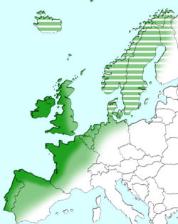
1 ...with the possible exception of modernity's smaller bison:
"present-day bison are not like the ones the Clovis people
hunted. They are smaller... [but] remarkably alike in their
genetic make-up. This suggests that all present-day bison
are descended from a very small group of animals"
(Economist, 2007)
"present-day bison are not like the ones the Clovis people
hunted. They are smaller... [but] remarkably alike in their
genetic make-up. This suggests that all present-day bison
are descended from a very small group of animals"
(Economist, 2007)
2 From circa 10,000 to circa 5/3,000 BCE, most areas of
Eurasia, the Middle East, and North Africa were in transition
from traditional food collecting cultures, to food processing
cultures, as indicated by the terms Mesolithic and Neolithic.
Communities termed "Neolithic" were already primarily
agriculturally-dependent [but had not yet developed metals
such as bronze]- as was much of Anatolia, the Near East,
South Asia, East Asia and Southeastern Europe through
much of the era. "Mesolithic" communities, however, were
predominantly mixed economies, with usually permanent
settlement and often some agriculture, combined with still
significant hunting, fishing, and/or food collecting- as
prevailed in most of northern and western Europe, northern
Eurasia, and Mesoamerica throughout most of the
(10.000-5/3,000 BCE) era.
Eurasia, the Middle East, and North Africa were in transition
from traditional food collecting cultures, to food processing
cultures, as indicated by the terms Mesolithic and Neolithic.
Communities termed "Neolithic" were already primarily
agriculturally-dependent [but had not yet developed metals
such as bronze]- as was much of Anatolia, the Near East,
South Asia, East Asia and Southeastern Europe through
much of the era. "Mesolithic" communities, however, were
predominantly mixed economies, with usually permanent
settlement and often some agriculture, combined with still
significant hunting, fishing, and/or food collecting- as
prevailed in most of northern and western Europe, northern
Eurasia, and Mesoamerica throughout most of the
(10.000-5/3,000 BCE) era.

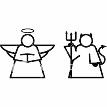





United States
.
. .
. .
(France) . . (Germany)
. .
. .
. .
. .
....……………………………..
Indonesia (Russia) Japan
.
. .
. .
(France) . . (Germany)
. .
. .
. .
. .
....……………………………..
Indonesia (Russia) Japan
3 Although farmers were also (for the most part) permanently
settled by later in the Meso-Neolithic, littoral settlements,
being generally located on ore coveted land, tended to be
older and less inclined or able to maintain a kin-based
community identity or restrictions. Prosperity has always drawn
relative diversity.
settled by later in the Meso-Neolithic, littoral settlements,
being generally located on ore coveted land, tended to be
older and less inclined or able to maintain a kin-based
community identity or restrictions. Prosperity has always drawn
relative diversity.
4 Greenfeld (1995) originally proposed a 'collectivist'-
'individualist' dimension. See more on pp. 17-18, below.
'individualist' dimension. See more on pp. 17-18, below.
5 We use the 'Greek Dark Ages' (c.1200-800 BCE) as the
dividing line between the proto-writing, hieroglyphic scribes,
and bronze technology of the first three millenniums of the
ancient era (4th-2nd millenniums BCE), and the alphabets,
literature writing, and iron (all radically democratizing)
technologies of the thousand years from c.800 BCE- 300 AD
dividing line between the proto-writing, hieroglyphic scribes,
and bronze technology of the first three millenniums of the
ancient era (4th-2nd millenniums BCE), and the alphabets,
literature writing, and iron (all radically democratizing)
technologies of the thousand years from c.800 BCE- 300 AD
6 Ethnic-specific kingdoms in Korea (not one of our areas of
study) may have been distinct and nationally cognizant more
than a thousand years prior, in the 2nd millennium BCE.
study) may have been distinct and nationally cognizant more
than a thousand years prior, in the 2nd millennium BCE.
7 with few exceptions, the pre-literate, iron-weaponed 'tribes'
(actually vast tribe-based confederations) were not restrictive
enough to qualify as 'ethnic groups'; but they were usually-
however haphazardly formed- of mutually intelligible
language and religious customs.
(actually vast tribe-based confederations) were not restrictive
enough to qualify as 'ethnic groups'; but they were usually-
however haphazardly formed- of mutually intelligible
language and religious customs.
8 We have excluded the Ottoman Empire and most of the
middle-east from this section, due to the empire's prior
origins in the late medieval and early modern eras. We
have also excluded what was arguably (or at least fast
becoming) a de facto United States empire in central
America by c.1900.
middle-east from this section, due to the empire's prior
origins in the late medieval and early modern eras. We
have also excluded what was arguably (or at least fast
becoming) a de facto United States empire in central
America by c.1900.
9 by direct imperialism, we mean simply imperialist
domination of one country by another under the auspices of
the dominating country's flag (not to be confused with direct
rule, which is generally understood to mean colonial rule
directly/primarily from the dominating country's own
government and officials). Indirect imperialism, in contrast, is
simply the domination of one country's economic policy
and/or natural resources, under the auspices of foreign or
multi-national corporations. For example, US-based
corporations still control a large share of economic policy and
GDP in the Philippines, although only the embassy had been
flying the US flag since 1946.
domination of one country by another under the auspices of
the dominating country's flag (not to be confused with direct
rule, which is generally understood to mean colonial rule
directly/primarily from the dominating country's own
government and officials). Indirect imperialism, in contrast, is
simply the domination of one country's economic policy
and/or natural resources, under the auspices of foreign or
multi-national corporations. For example, US-based
corporations still control a large share of economic policy and
GDP in the Philippines, although only the embassy had been
flying the US flag since 1946.
10 revisiting (from Fig 2.1) the U-shaped trajectory of human
evolutionary social hierarchy, from Christopher Boehm's
Hierarchy in the Forest (1999, p. 65)
evolutionary social hierarchy, from Christopher Boehm's
Hierarchy in the Forest (1999, p. 65)
11 Most religious nationalisms have traditionally been
associated with charismatic authority, dating back from at least
the days of temple scribes hording (as opposed to sharing)
powers. However, certain religious innovations- the original
Christianity and Protestantism, as well as some interpretations
of Islam and Buddhism- have clearly promoted civicness and
non-discriminatory equality in society.
associated with charismatic authority, dating back from at least
the days of temple scribes hording (as opposed to sharing)
powers. However, certain religious innovations- the original
Christianity and Protestantism, as well as some interpretations
of Islam and Buddhism- have clearly promoted civicness and
non-discriminatory equality in society.
12 articulated by Turkish writer Ayhan Akman (2004) as
future-oriented and state-imposed 'imported' secularist Western
culture that "demands a 'civilizational conversation'" (Akman,
26)- not unlike our civic-collectivist hybrid category of
nationality. We can see how this 'Modernist' (essentially
convergence) nationalism is often viewed warily by both
traditionally civic and traditionally charismatic heritages.
future-oriented and state-imposed 'imported' secularist Western
culture that "demands a 'civilizational conversation'" (Akman,
26)- not unlike our civic-collectivist hybrid category of
nationality. We can see how this 'Modernist' (essentially
convergence) nationalism is often viewed warily by both
traditionally civic and traditionally charismatic heritages.




nor tenuous. maritime/trade havens.
